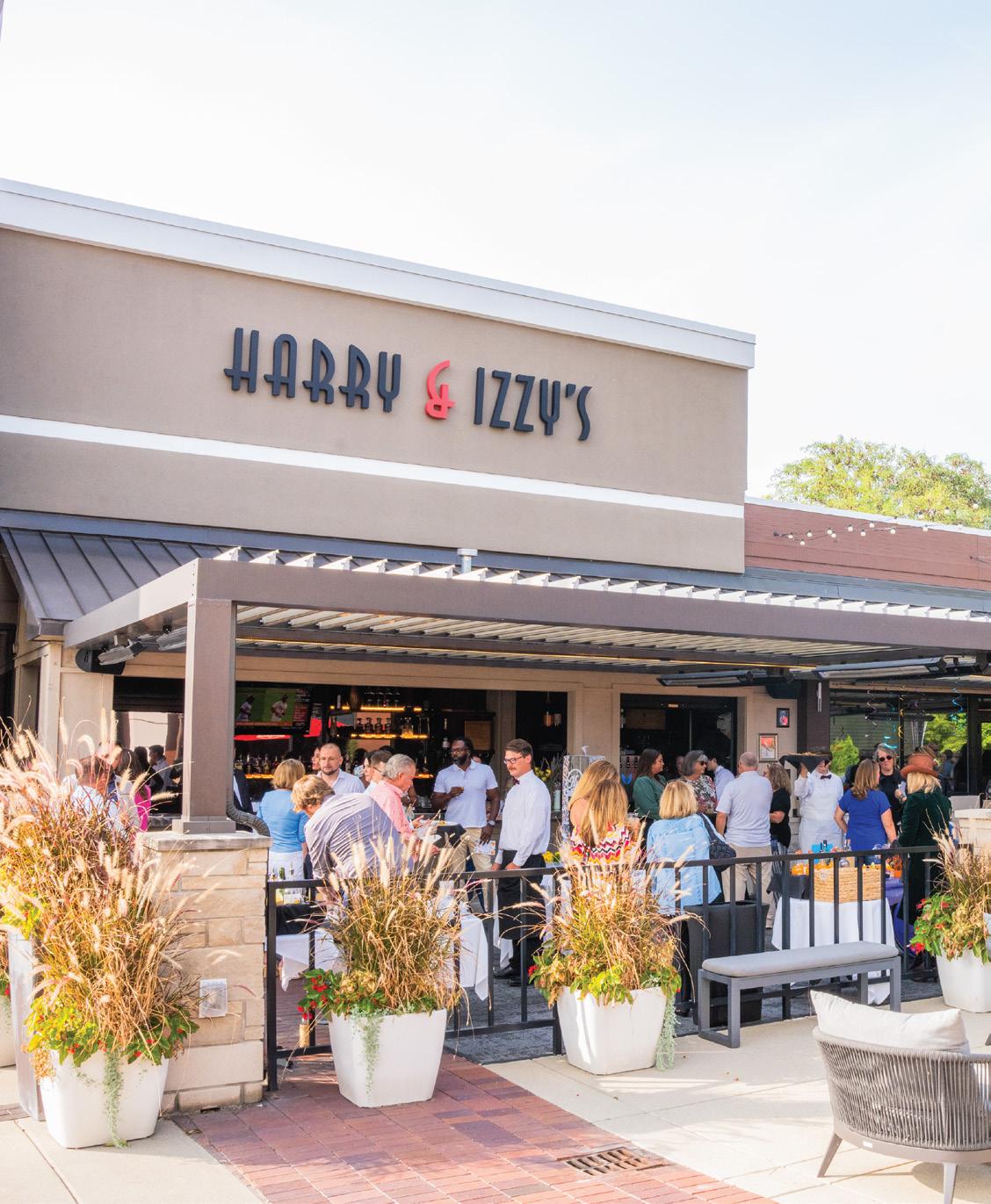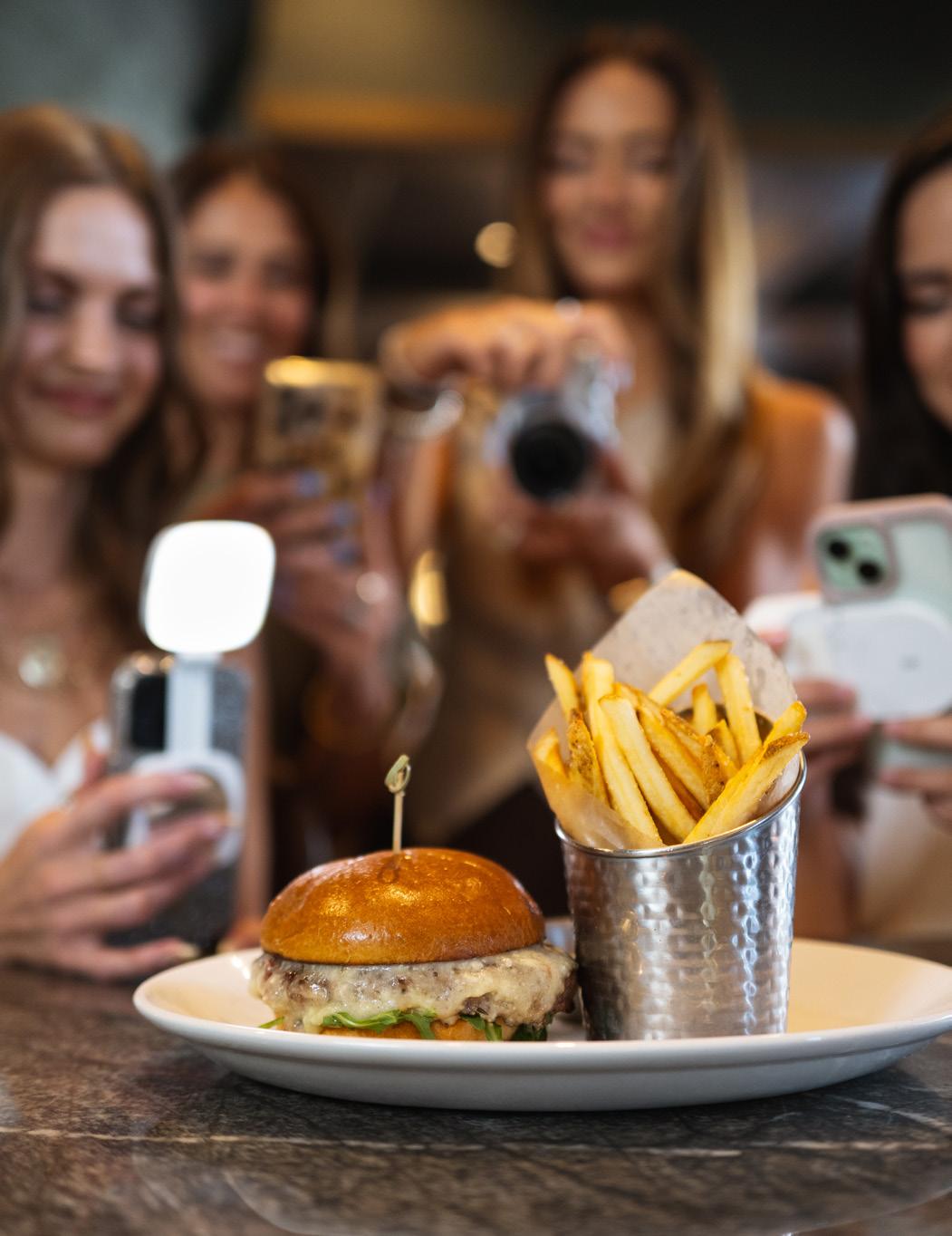

The Camera Eats First

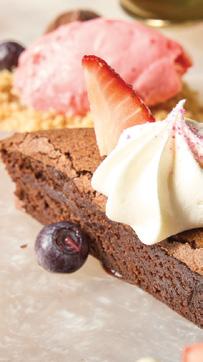
























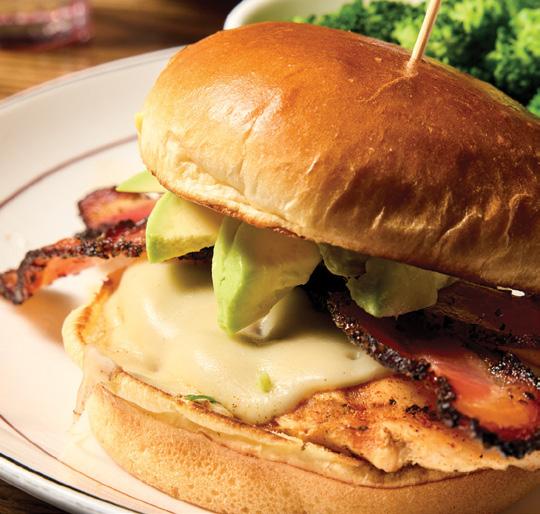









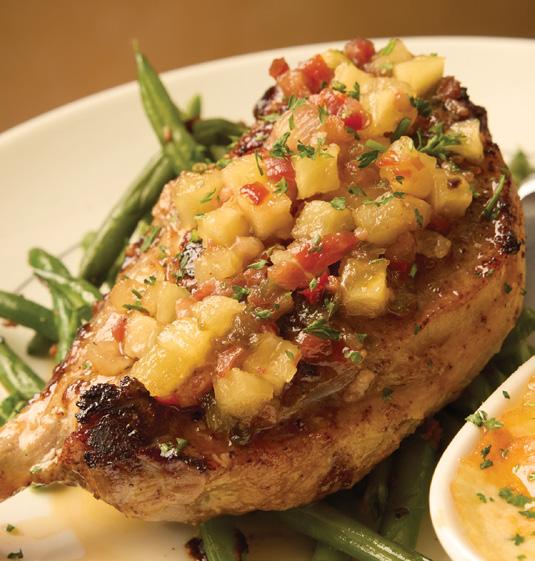



PUBLISHER
Adam Grubb
MANAGING EDITOR
Stephanie Decker
SENIOR EDITOR
Bailey Shelton
DESIGN
Molly Tippner
WRITERS
Adam Grubb
Julia Hockman
Carie McMichael
Lavanya Narayanan
Kylee Scales
Bailey Shelton
Reba Toloday
PHOTOGRAPHY
Adam Grubb Media
Torrie Hudson
Tess Lawyer-Smith
Kylee Scales
Bailey Shelton
Reba Toloday
Cover photo by Tess Lawyer-Smith
Special thanks to 1933 Lounge in Carmel and Keeping Up Local for the cover models and location.
ADVERTISING QUERIES
sales@adamgrubbmedia.com
is a member of Edible Communities and is licensed and published by Adam Grubb Media. Published four times yearly in February, May, August and November. No part of this publication may be used without written permission of the publisher. © 2025 All Rights Reserved.


Dear Reader,
There’s something about fall in Indiana that feels like a well-kept secret. As we readily jump into pumpkin spice and gathering around the fire pit roasting s’mores, we also experience something richer, a season that’s both grounding and bursting with flavor.
Our farmers’ markets don’t wind down quietly; they overflow with latesummer tomatoes, crisp apples, and the first signs of squash and root vegetables. The mornings start cool enough for coffee on the porch, and by afternoon the sun still lingers just long enough for one more backyard gathering or early evening stroll.
This issue is a celebration of that in-between season, a time of change, comfort, and creativity. Sharing stories of bold flavors, hidden treasures, dinner with friends, and the people making Indianapolis a can’t-miss destination.
We also have the inside scoop on apple cider, some staff fall favorites around Indy, and a spotlight on local baristas whose passion for coffee is more than skin deep. In Adam Grubb’s column, he’s highlighting world-class makers that are living right in our backyard, like Capriole’s Judy Schad.
At Edible Indy®, we believe the fall table is one of the most exciting of the year. It’s where the frenzy of summer slows, where traditions are passed down, and where gratitude becomes a daily practice.
So pull up a chair and get cozy. Sip something warm. Let’s savor the season together.
Stephanie Decker, Managing Editor, Edible Indy ®

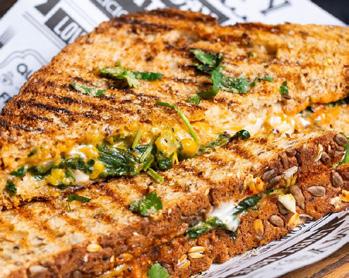
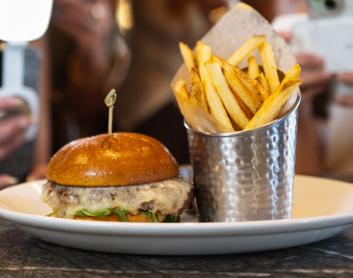
The Camera Eats First
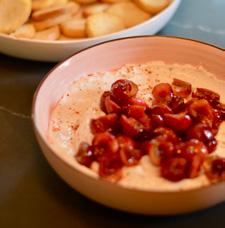
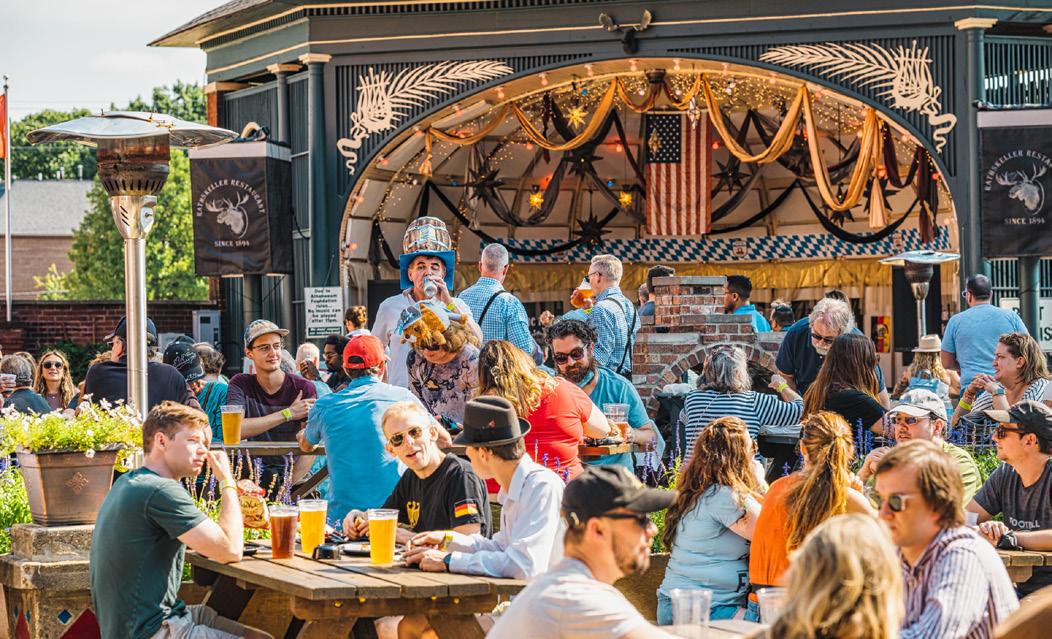
Community Calendar
AUGUST
DEVOUR INDY SUMMER FEST
August 18th – August 31st
Participating restaurants throughout Indianapolis devourindy.com
INDIANA BACON FESTIVAL
August 23rd Downtown, Delphi, IN indianabaconfestival.com
BREWS ON THE BOULEVARD
August 23rd
Midtown Plaza, Carmel, IN carmel.in.gov
BUTTER ART FAIR
August 28th – August 31st The Stutz, Indianapolis butterartfair.com
MALLOW RUN'S 20TH ANNIVERSARY FESTIVAL
August 30th
Mallow Run Winery, Bargersville, IN mallowrun.com
INDIANA SUNFLOWER FESTIVAL
Weekends, August 30th –September 7th
Stuckey Farm, Sheridan, IN indianasunflowerfestival.com
SEPTEMBER
GERMAN AMERICAN KLUB INDIANAPOLIS 51ST ANNUAL OKTOBERFEST
September 4th – September 6th
German American Klub, Indianapolis indianapolisgak.com
JUPITER FLIGHTS BALLOON FESTIVAL AT CONNER PRAIRIE
September 5th – September 7th
Conner Prairie, Fishers, IN connerprairie.org
ST. JOAN OF ARC FRENCH MARKET
September 6th
St. Joan of Arc Catholic Church, Indianapolis sjoa.org
HARVEST FEST
September 8th
Heritage Park at White River, Fishers, IN fishersartscouncil.org
APPLE PLUCKIN' DAYS
Weekends, September 13th –September 28th
Stuckey Farm, Sheridan, IN stuckeyfarm.com
HONEYCRISP DAYS
September 15th – September 18th
Tuttle Orchard, Greenfield, IN indianapolisorchard.com
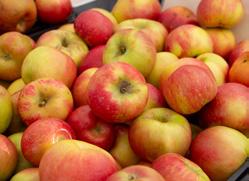
TOUCH A TRUCK
September 20th
Johnson County Park Shelter Area, Ninevah, IN jocoparks.com
INDIANAPOLIS OKTOBERFEST
September 26th
Downtown, Indianapolis indianapolisoktoberfest.com
INTERNATIONAL FOOD FESTIVAL
September 26th
Saraga International GroceryCastleton, Indianapolis saragaindy.com
FRANKLIN FALL FESTIVAL
September 27th
Franklin amphitheater, Franklin, IN franklinparks.com
THE GREAT PUMPKIN FESTIVAL
September 30th
Wasson Nursery, Fishers, IN wassonnursery.com

OCTOBER
HEADLESS HORSEMAN FESTIVAL AT CONNER PRAIRIE
Thursdays through Sundays, October 2nd – 26th
Conner Prairie, Fishers, IN connerprairie.org
GERMANFEST
October 4th
Athenaeum, Indianapolis athenaeumindy.org
BREWFARI
October 4th
Indianapolis Zoo, Indianapolis indianapoliszoo.com

ABERDEEN HARVEST FESTIVAL
October 4th
The Barn at Aberdeen Farms, Bargersville, IN aberdeenliving.com
CIDER PRESSIN' DAYS
Weekends, October 4th –October 12th
Stuckey Farm, Sheridan, IN stuckeyfarm.com
EPICUREAN INDY
October 5th
The Stutz, Indianapolis epicureanindy.com

WORLD FOOD CHAMPIONSHIPS
October 16th – 19th
Indiana State Fairgrounds, Indianapolis worldfoodchampionships.com
CHICKEN & BEER FESTIVAL
October 18th
University Park, Indianapolis chickenandbeerindy.com
NOVEMBER
CIRCLE CITY FOWLFEST
November 15th
Fowling Warehouse, Indianapolis fowlingwarehouse.com
Brewfari
PHOTO BY
Epicurian Indy
The Great Pumpkin Festival
Honeycrisp Days
CHEESE AND DESIST: The World of Cheese
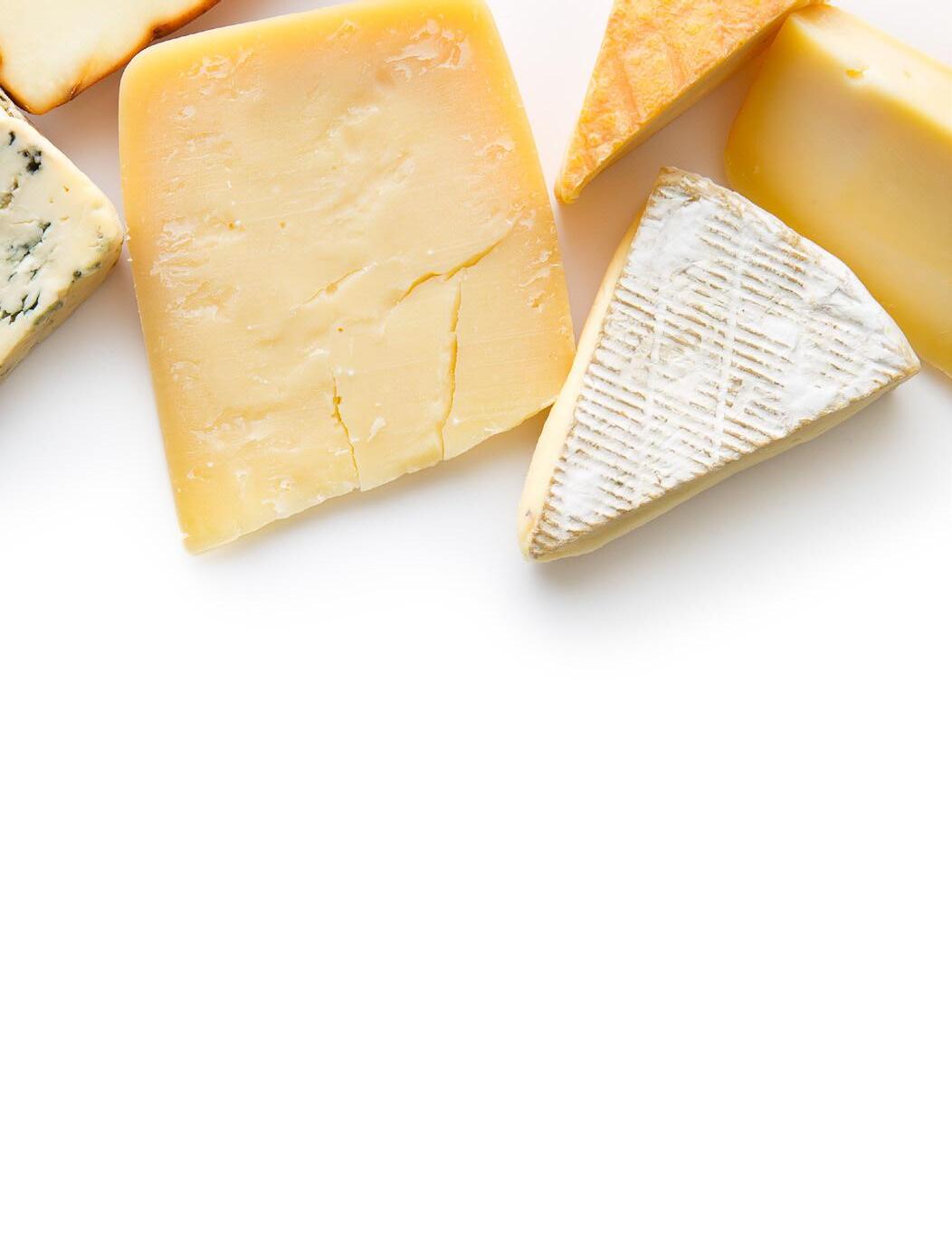
Written by Carie McMichael
From Grandma’s baked macaroni to the infinite possibilities of charcuterie, Midwesterners take cheese seriously. But even the most seasoned curd nerds may be unaware of the fascinating world of cheese forgery— a fraud so pervasive, producers in the European Union are going to complex lengths to stave off dairy deplorables.
You’re probably familiar with the most common form of cheese forgery: companies that cannot be bothered to pretend their product is authentic. There may be homogenized branding attached, often with playful misspellings like cheez or parmezan.
The second kind of cheese forgery concerns an organized criminal effort to deceive consumers through means like fake labeling, geographic indication (GI) infringement, or introducing inferior products into centuries-old cheesemaking processes.
While mozzarella remains America’s most popular cheese, the variety most targeted by fraud is parmesan—or Parmigiano Reggiano, as the real deal is known in the EU. Much like Champagne in France, parmesan can only be called Parmigiano Reggiano if it’s produced in one of five provinces in the Emilia Romagna region of Italy using three ingredients: raw cow milk, salt, and rennet.
The Parmigiano Reggiano Cheese Consortium (PRC) estimates the fake parmesan market is responsible for a jaw-dropping $2 billion a year in losses. Formed in 1932, the consortium is the supervising authority that safeguards the official designation.
In 2022, the PRC intervened when Kraft Heinz attempted to register the trademark “Kraft parmesan cheese” in Ecuador. After three years in court and a favorable judicial opinion, PRC President Nicola Bertinelli said, “The international fight against the illegitimate use of the term ‘parmesan’ continues.”
Outside the court of law, measures are being taken in supply chains to combat rampant cheese forgery: DNA testing, rind analysis, and tests of fat/protein ratios for inferior ingredients. Some producers are even embedding microchips in a cheese wheel’s casein label. PRC spokesperson Alberto Pecorari told The Guardian, “We keep fighting with new methods. We won’t give up.”
Not all fromagaphiles will be passionate about whether or not the buffalo mozzarella in their fridge was made from real buffalo milk, but anyone who has ever attempted to replicate a beloved Italian restaurant’s alfredo sauce recipe knows their stovetop copycat just isn’t the same. Don’t worry, chefs of the world: It’s not you. It’s the cheese.


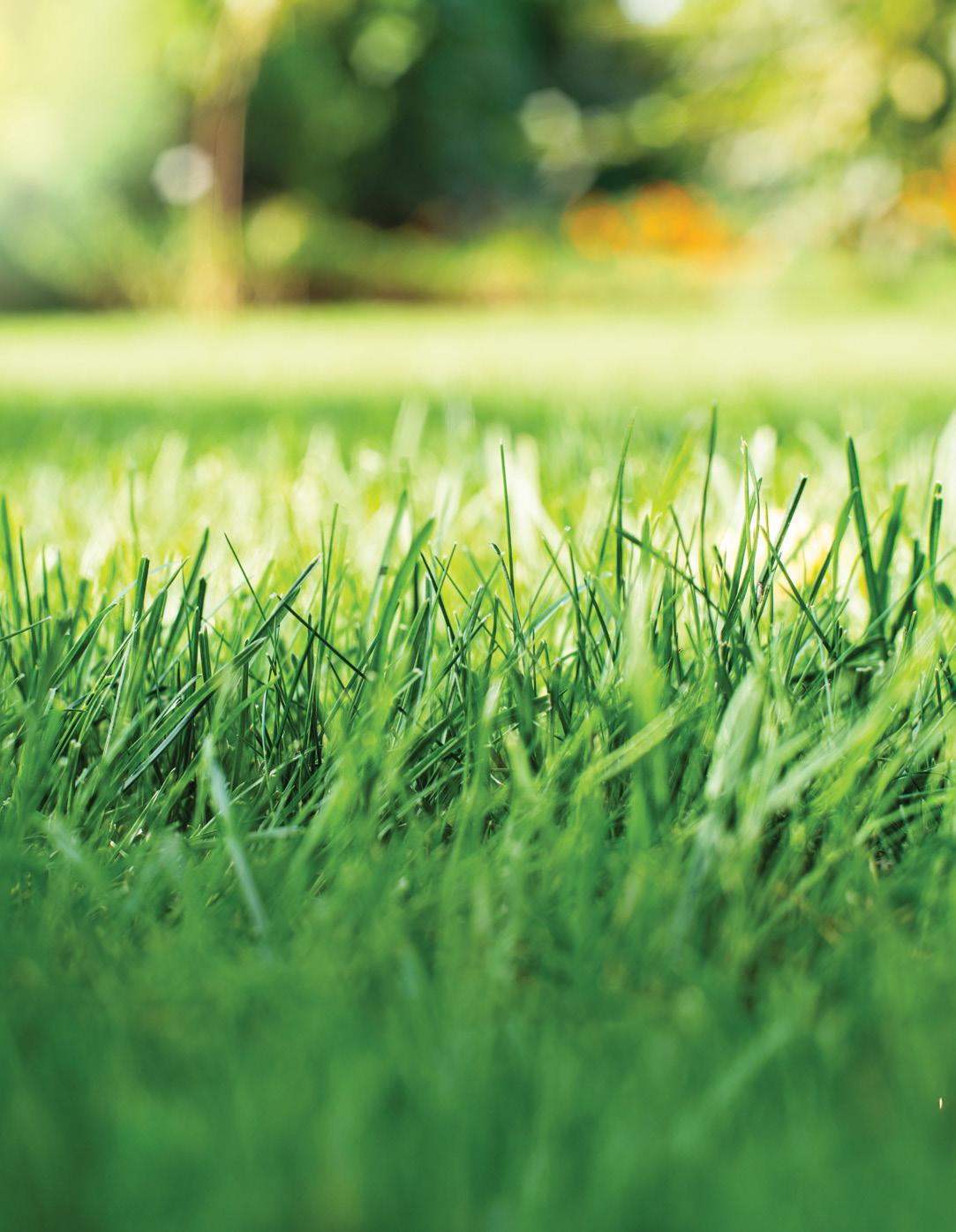
episode1availablenow!
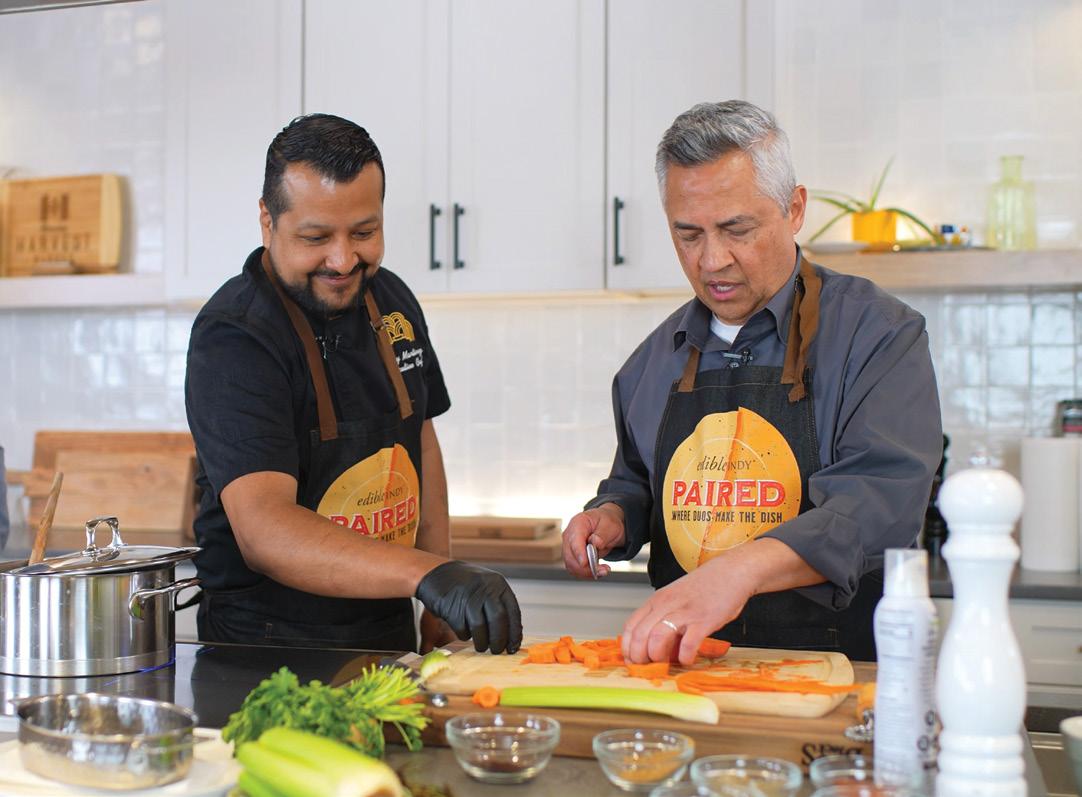
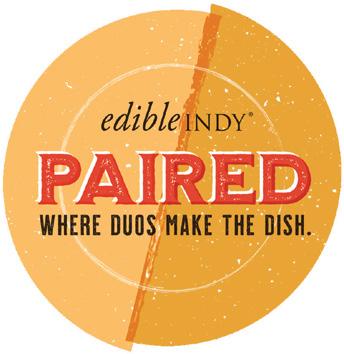
Local chefs and local celebrities team up to create unforgettable dishes, unexpected moments, and a whole lot of fun in between!
EPISODE 1: Ricky Martinez (left), executive chef at The Fountain Room, and Leonard Hoops (right), president and CEO of Visit Indy, pair up to take on the 45-minute kitchen challenge!
FILMED AT NIEMANN HARVEST MARKET IN CARMEL, IN
we think you’ll like this
Edible Indy® staff share the food and drinks that they are loving this fall. Check out their picks and try them for yourself.

BAILEY SHELTON SENIOR EDITOR
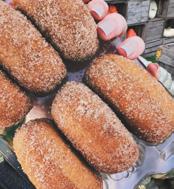
CINNAMON-SUGAR APPLE DONUTS
TUTTLE ORCHARDS
5717 N. 300 W., Greenfield indianapolisorchard.com
I grew up in Greenfield, where Tuttle’s is a seasonal staple. It’s hard to go wrong with the selection in their shop, but a cake donut infused with apple cider? No contest. They come in packs of six to take home. For the full effect, I love to heat one up before chowing down. When visiting Tuttle’s, be sure to check out their fall farmyard activities and u-pick apples and pumpkins (check website for picking schedules).

MELANIE BREWER DIRECTOR OF CLIENT EXPERIENCE
MAE
MAE’S MEATLOAF
JUNIPER ON MAIN
110 E. Main St., Carmel juniperonmain.com
I didn’t go looking for meatloaf greatness, but Mae Mae’s Meatloaf at Juniper on Main found me. Topped with a brown sugar and ketchup glaze, nestled beside mashed red potatoes and sautéed southern veggies, it’s the kind of plate that tastes like home—only better.
The cozy, coastal vibe and charming patio make this spot feel like a mini getaway, just with way better comfort food. Consider this your official excuse to love meatloaf again.
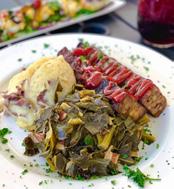

DIRECTOR OF EVENTS & STRATEGY
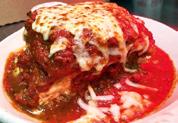
SAUSAGE AND RICOTTA LASAGNA
SOME GUYS PIZZA
6235 Allisonville Rd., Indianapolis someguyspizza.com
This lasagna isn’t just a dish, it’s a tradition. With layers of tender pasta, tomato sauce, and gooey, melted cheese, it’s the kind of meal you won’t forget. The Italian sausage adds a deep, savory flavor. Between each layer, whipped ricotta and parmesan bring a creamy, velvety richness, while melted mozzarella delivers that satisfying, cheesy pull we all love. Comforting, filling, this lasagna is worth marking your calendar for as its only available the first Friday, Saturday, and Sunday of each month!

SENIOR PRODUCER
TRADITIONAL CHEESESTEAK
HOAGIES & HOPS
4155 Boulevard Pl., Indianapolis hoagiesandhops.com
You don’t have to be from Philadelphia (which I’m not) or an Eagles fan (which I am!) to enjoy the traditional cheesesteak at Hoagies & Hops. This sandwich is the real deal. I take mine “whiz, witout,” which is with Cheez Whiz and without onions. If Cheez Whiz is a little too authentic, you can ask for American or provolone. The sandwich pairs nicely with one of the many Chilly Water Brewery beers they have on tap. I love to add on the bacon and beer cheese crinkle fries. Go Birds!!!!
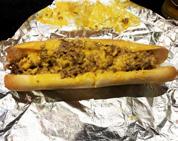
KRISTY FLOYD
SHANE TROWBRIDGE
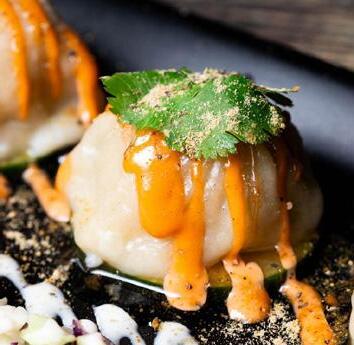
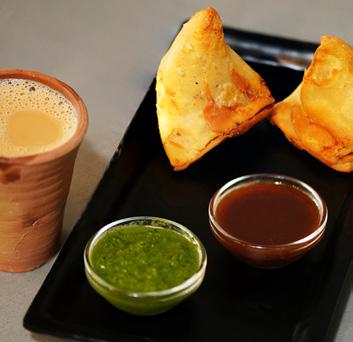

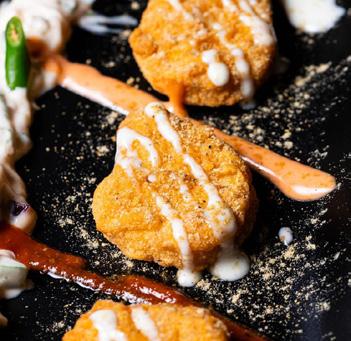
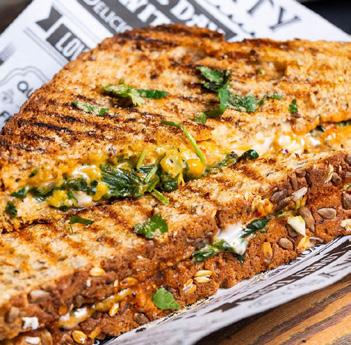
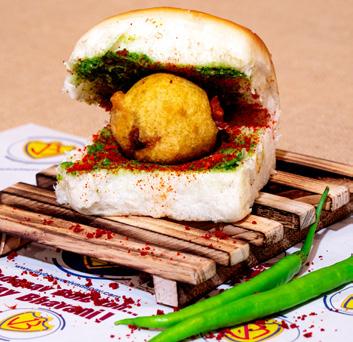
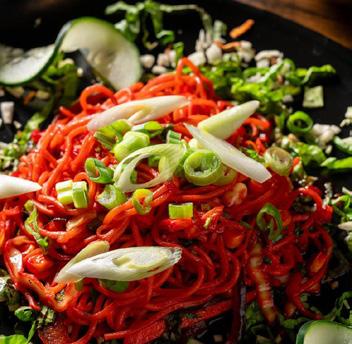
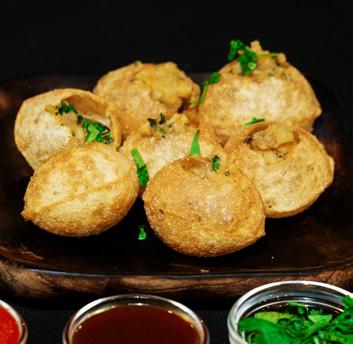
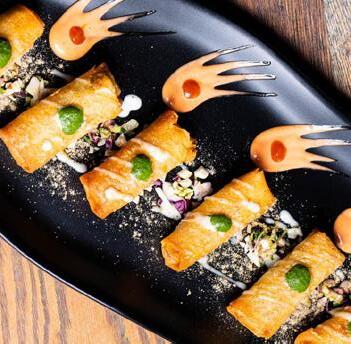
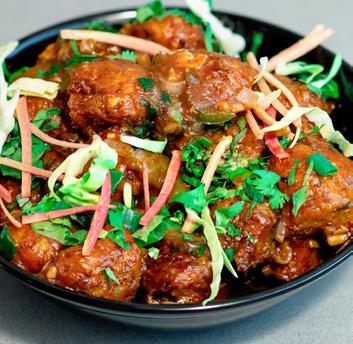
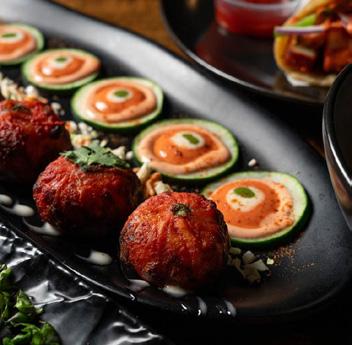
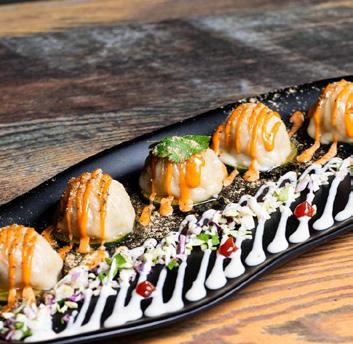
FAST-CASUAL Indian Eateries
FROM SIT-DOWN TO STREET-STYLE: HOW INDIAN FOOD IS BECOMING MORE CASUAL HERE IN INDIANA
Written by Lavanya Narayanan
Gone are the days of buffet-style, nondescript, heavy Indian dining—the 2020s have added sandwiches, rolls, chaats, and a plethora of Indian food ‘on the go.’
It’s an average Tuesday morning. I roll out of bed, open Instagram, and am met with the voice of Amanda Gibson, pastry chef and newly minted food influencer here in Indianapolis. She’s added a new video to her array of cuisines that she’s trying, and this time she’s visiting Incredible India in Fishers.
At first glance, it looks like any other Indian restaurant that’s occupied Indiana over the last three decades: chafing dishes brimming with nondescript, orange-tinted gravies, glistening triangles of naan, and syrupy gulab jamuns floating around. But watch for a moment longer, and then Amanda mentions the crispy fried dough stuffed with ingredients that is panipuri.
One of many Indian chaats, or street food items, panipuri sustained me during many a late night while I was living in India, and I can’t help but smile as she pours the spiced water,
or jaljeera, into the crispy puri shell, popping it in her mouth for an utterly satisfying single-bite experience. The Indian buffet, it seems, is transforming into something with more diverse offerings. Alongside thin, piped jilebis, Gibson claims she’s found her new favorite Indian dish.
This isn’t the first time Indian cuisine has gone fast-casual here in America—not at all. In fact, it was almost a decade ago that Eater reported on the movement, singling out eateries such as New York’s Inday and the Kati Roll Company, which were carving a new fast-casual space amidst curry houses and upscale, fine dining Indian restaurants. In Indianapolis, the now-closed Tandoor and Tikka introduced Indian street food to IUPUI students on a budget and craving a hit of spice.
It’s hard to ignore the draw of street food. After all, who could miss the likes of San Francisco’s Curry Up
Now, founded by husband-and-wife duo Akash and Rana Kapoor, which began as a food truck and now has over 12 brick-and-mortars around the country? The concept even landed them on Fast Casual’s 2023 Top 100 Movers and Shakers list. Or Washington D.C.’s Rasa, which specializes in chef-curated bowls, plates, and burritos, with chooseyour-own-adventure style selections.
This trend hasn’t bypassed Indiana, either. While the past two decades saw Indianapolis embracing Indian food in the form of Amber Indian and Shalimar Restaurant, olden-style Bollywood music of our parents’ childhoods filling the entryways as we picked up stainless steel plates to load up with paneer in all its forms, a luscious butter chicken, a lamb korma, and naans piled high, COVID changed it all—truly? For the better. For in its place are truly authentic Indian street food eateries—ones
that remind me of living in India as an overworked, over-excited 20-something, tasting freedom for the first time.
The first to catch on was possibly Happiee Sandhu, owner of Chai & Kathi Roll Lounge. Rather than play off of what Indianapolis residents already knew about Indian food, perhaps associating it with something heavy, indulgent, and even unapproachable, Sandhu decided to present the classics that feed people on the streets of big Indian cities like Mumbai and Delhi: kathi rolls, or India’s answer to the burrito, feature prominently on their menu, filled with succulent protein and the crunch of pickled red onions and the acidic punch of a squeeze of lime.
Of course, where success goes, the crowd will follow. Drive down 82nd Street and there is no dearth of Indian eateries. Looking for authentic Gujarati snacks, a killer Indo-Chinese chili paneer, and piping hot pav bhaji? Look no further than Hari Foods, an unassuming, cafeteriastyle eatery whose food eclipses that of its neighbor, fine-dining spot 1947 Indian Eatery. Eating there is a lesson in textural balance, as is any chaat experience. Crunchy papdi crackers get topped with heaps of chickpea gravy, crunchy fresh vegetables, doused in spicy and sweet chutneys, and cooled down with a sweet, strained yogurt called dahi. Order a diverse table of chaats and your meal is taken care of, with something to satisfy every diner. And it doesn’t end there. While you’re in the Castleton area, you might as well swing by Patel Brothers , Indians’ go-to grocery
store that, believe it or not, sells fresh samosas to snack on while you shop. Head back west and you’ll cross Desi Chowrastha, a menu that offers everything—Cheesecake Factory–style. It’s the place to taste chole poori, a Delhi classic with the most addictive chickpea gravy on that side of I-465, followed by a South Indian–style biryani.
Next stop: the newly opened Satvik Bhavan . Nestled just south of 465 on Michigan Road, their food is approachable, healthy, and still fun.
Sit down to a crisp dosa or pillowy idlis, both singing with the sour punch of fermentation, accompanied by a perfectly fried vadai and rounded out with a sambar, or lentil stew, that rivals my mother’s. Vegans in the city, take note.
Of course, not every eatery is 100% vegetarian. Take Eggholic on 86 th Street and Ditch Road, an eggsplosive eatery that’s caught the eyes of even Indianapolis Monthly with its heaping lava pulav and stuffed and— or egg—sandwiches.
Whether or not we saw it coming, Indianapolis is—and has been—ready for Indian food to go mainstream. More importantly, the city is embracing it as its own, something easily available and as approachable as, say, a quesadilla, a burger, or a bowl of pasta.
So next time you’re looking for a bite on the go, why not head into Castleton Square and grab yourself a plate of chaat? Sweet, spicy, savory, and sinful—it delivers on all fronts.
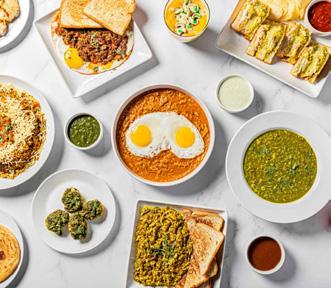
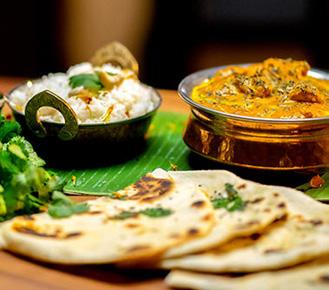
CHECK OUT THESE INDIAN EATERIES FOR YOURSELF!
Incredible India
7525 E. 96 th St., Indianapolis incredibleindia.us
Chai & Kathi Roll Lounge
8028 S. Emerson Ave., Indianapolis chaiandkathiroll.com
Hari Foods
5850 E. 82nd St., Indianapolis
1947 Indian Eatery
5846 E. 82nd St., Indianapolis 1947indy.com
Patel Brothers
6302 E. 82nd St., Indianapolis patelbros.com
Desi Chowrastha
3838 E. 82nd St., Indianapolis desichowrastha.com
Satvik Bhavan
8840 N. Michigan Rd. #105, Indianapolis
Eggholic
1224 W. 86 th St., Indianapolis eggholic.com






KITCHEN SCIENCE
Apple Alchemy
THE SCIENCE BEHIND CIDER
Written by Kylee Scales
There’s something magical about the scent of hot apple cider wafting through a home. And though it’s tempting to just grab a jug from the store, making your own cider is a worthwhile experience.
A Brief History of Cider in the States
Apple cider was popular in Colonial America because it was safer to drink than water. It was almost always fermented, due to lack of refrigeration. Nonalcoholic apple cider emerged in the late 1800s when pasteurization made it more feasible to produce and store safely.
Fermentation is the defining difference. When making hard cider, yeast is added (or wild yeasts are allowed to work) to convert sugars into alcohol. The end result is a beverage similar to beer or wine in strength (4–7% ABV).
The fermentation-free version ultimately gained popularity during the Temperance Movement and Prohibition when alcohol was banned and orchards promoted “sweet cider.” This is close to the apple cider we know and love today.
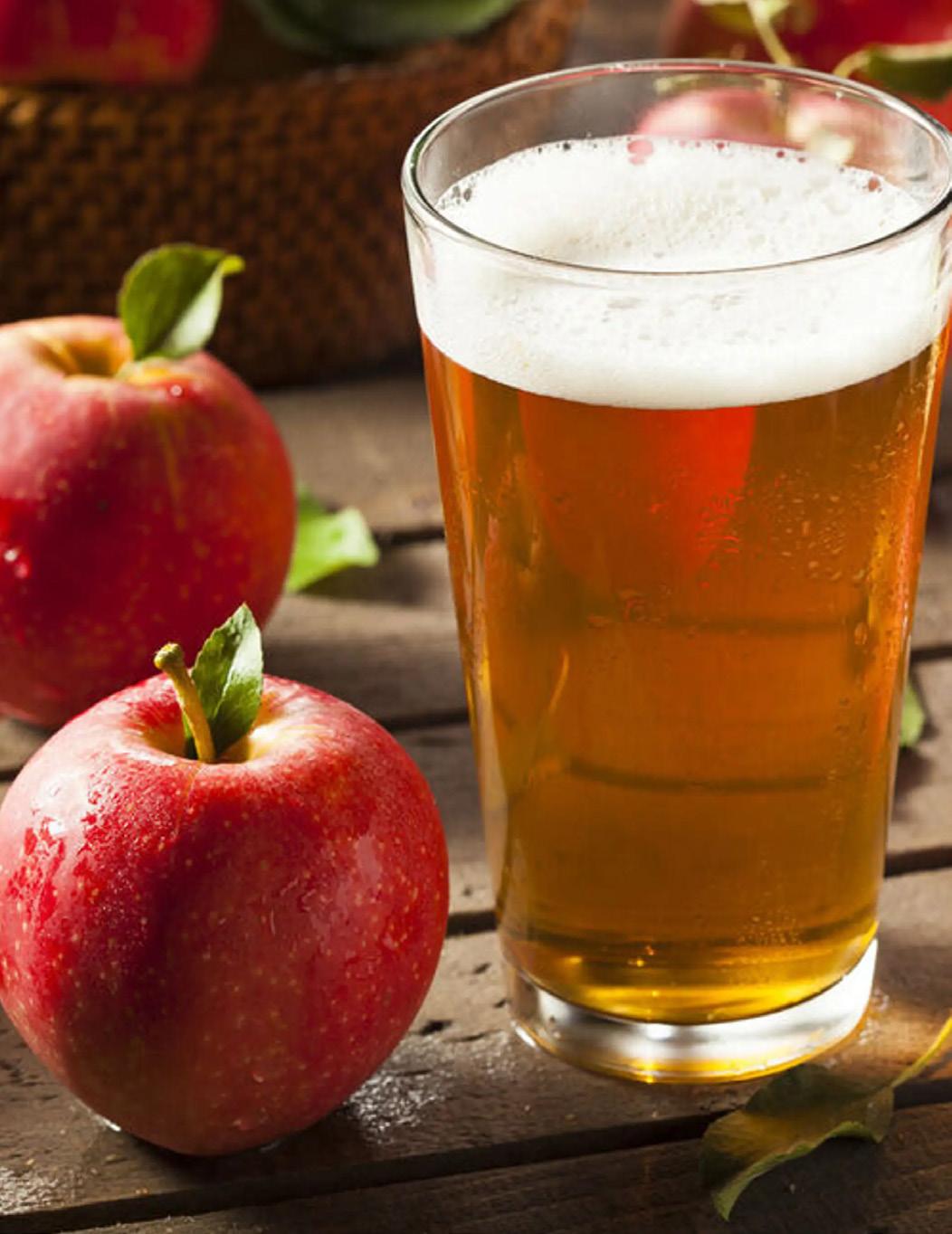
MAKING CIDER AT HOME
1. Use a blend of sweet and tart varieties for a complex, nuanced flavor. Example: Honeycrisp and Empire apples balance the bright acidity of Granny Smiths and Pink Ladies.
2. After a rough chop, put the apples in a large stockpot with warming spices. Cinnamon sticks and whole cloves are nonnegotiable. I also add fresh ginger and orange.
3. Add enough water to cover the top by two inches. Heat on high until it reaches a simmer, and then reduce the heat to medium-low and cover.
4. Let it simmer for about 2 hours. Your home will smell amazing as the apples break down and the spices bloom.
5. Once the apples are very soft, use a wooden spoon to mash them against the pot, and simmer for another hour.
6. The same method works with a slow cooker. The only difference is the cooking time. Cook on low for 6 hours or on high for 4 hours.
7. Now the cider is ready to be strained. Use a fine-mesh sieve to separate the liquid from the solids. At this point, you can stir in sweetener like brown sugar or maple syrup.
FEAST YOUR EYES
You've probably seen the internet trend of coffee loyalists backing out of their local shop when the barista doesn't have any tattoos. This collection of portraits celebrates some of the most devoted professionals in Indy's coffee scene, all of which have the ink to prove it.
Photos by Torrie Hudson

Located in the historic Athenaeum on Mass Ave, Coat Check Coffee started in 2017, and features signature lattes, locally roasted coffee and fresh baked goods all day. Enjoy plenty of indoor and outdoor community seating.
COAT CHECK COFFEE
401 E. Michigan St., Indianapolis @coatcheckcoffee coatcheckcoffee.com
NATALIE DYSON
ELLIE RIDENOUR
COAT
401 E. Michigan St., Indianapolis @coatcheckcoffee coatcheckcoffee.com
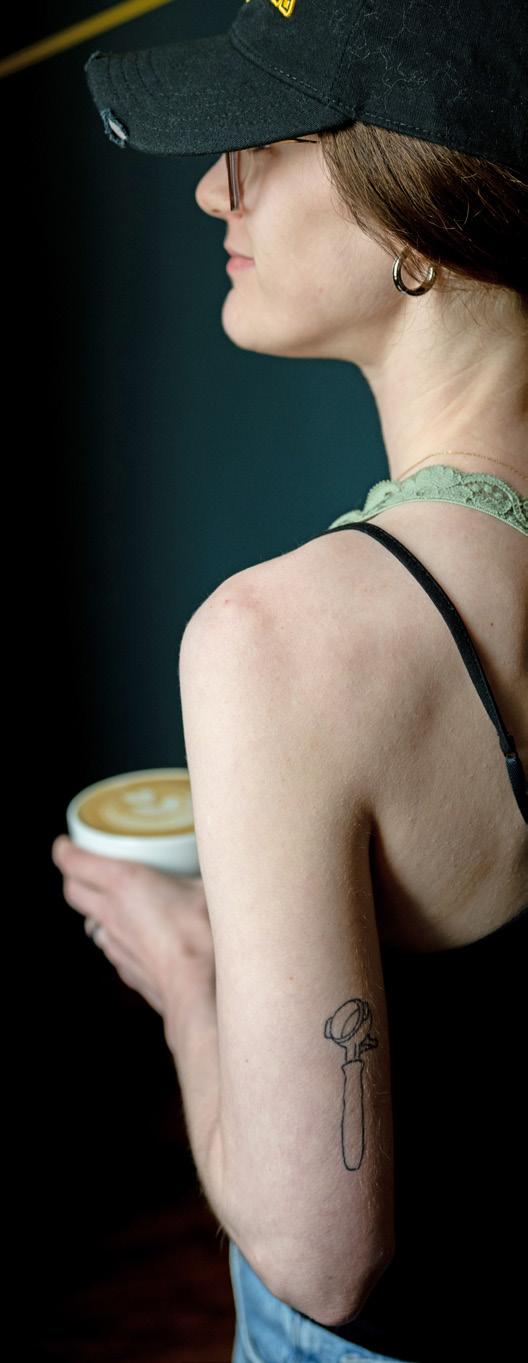
STEPHANIE RICCIARDI
(co-owner with her husband, Kasey, who has a matching tattoo)
Known for its inviting atmosphere and exceptional brews, Epic Coffee features a variety of specialty coffees, teas, and delicious pastries. It’s the perfect spot for a morning pick-me-up or an afternoon break.
EPIC COFFEE
7249 E. 146 th St., Ste 110, Carmel @epicoffeeindy
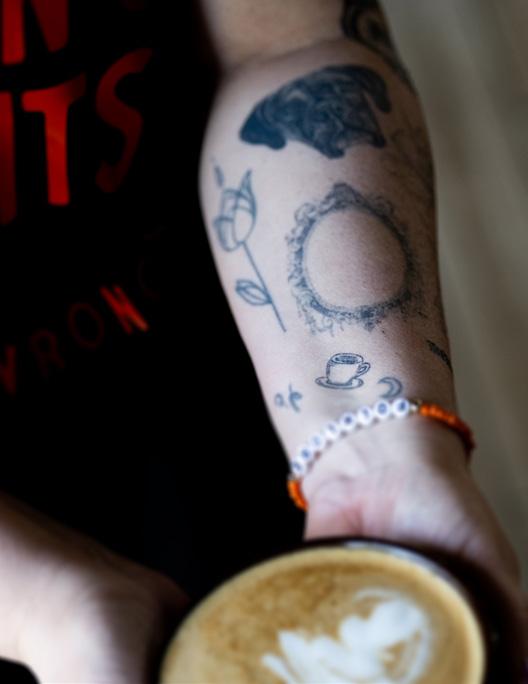
FEAST YOUR EYES
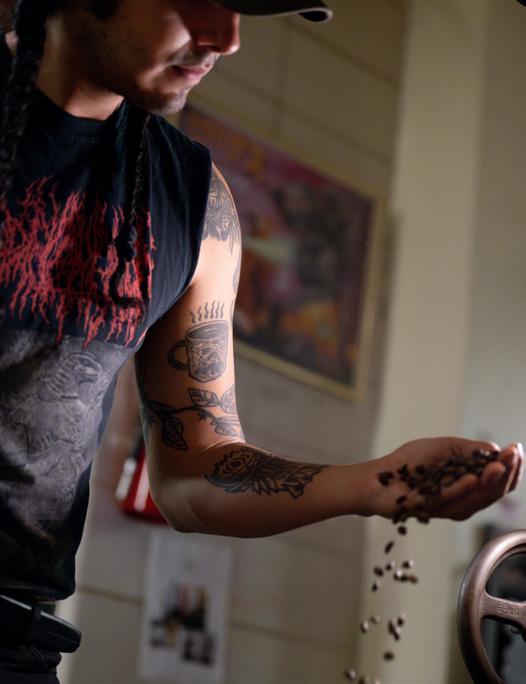
With his co-founder, Emery Conger, Steven runs an independent roasting project based on accessible, ethical sourcing and community cooperation.
SHUV COFFEE @shuvcoffee shuvcoffee.com
STEVEN GARCIA
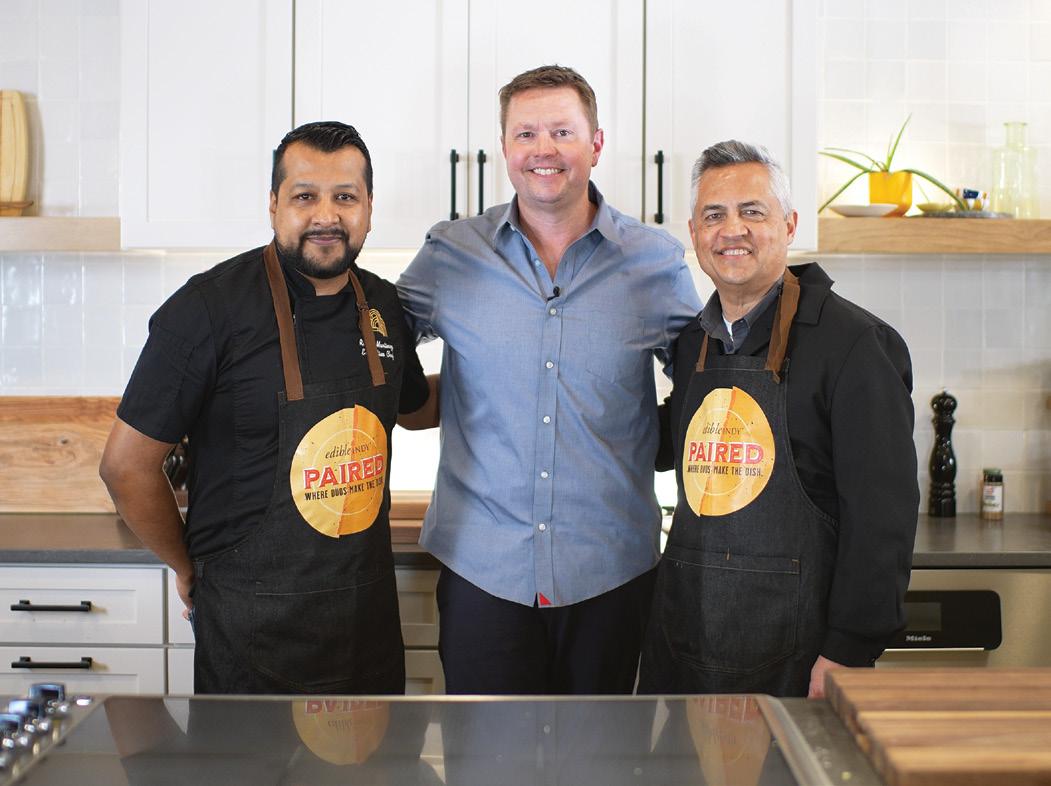
THE
A Conversation with Leonard Hoops
Leonard Hoops is the president and CEO of Visit Indy. Although much of his work is done behind the scenes, his handiwork can be seen around the city in the form of citywide events, from sports to festivals, conventions to concerts. Edible Indy ® caught up with Hoops on set for the first episode of their YouTube series, “Paired.”
Note: This interview has been edited for space and clarity.
INTERVIEW
Interview by Adam Grubb / Photo by Adam Grubb Media
Left to right: Ricky Martinez, executive chef at The Fountain Room; Adam Grubb, publisher of Edible Indy® and president of Adam Grubb Media; and Leonard Hoops, president and CEO of Visit Indy.
EDIBLE INDY: You’ve brought Final Fours, Super Bowls, and global conventions to Indy. But here, you’re in a kitchen. How often are you actually cooking at home?
LEONARD HOOPS: Rarely. I think someone wildly oversold my cooking abilities. I make steaks every week, sure, and I can scramble some eggs. That’s pretty much my go-to move. But I’m here today pretending I know what I’m doing, and trying not to burn the place down.
EI: You’re cooking with Chef Ricky Martinez, known for combining fine dining with fun. What’s that experience been like?
HOOPS: It’s been great. Ricky makes it comfortable. Honestly, I didn’t expect to enjoy it this much. He has this energy that makes you feel like you can actually do this— even when you clearly can’t. That’s a gift.
EI: Let’s go back a bit. You came to Indy from San Francisco. What did you think about the culinary scene here when you first arrived?
HOOPS: I came in 2011, and I expected it to be pretty limited. But I was surprised in the best way. My first real “wow” moment was at Recess. It hit me then: This is a farm-to-table region at its core. We’ve got cornfields, fresh produce, livestock, all surrounding us. Other cities might’ve branded the concept better, but we’ve been living it here for generations.
EI: Do you have a few go-to restaurants in town?
don’t have mountains or oceans.” And I’d say, “Neither does Paris.” Geography isn’t what makes a city special. Culture does. And ours is thriving. The food, the people, the energy—it’s all part of why we’ve been able to host these world-class events.
EI: You’ve led Visit Indy for over a decade. How far has the city come?
HOOPS: When I arrived, we were doing around 600,000 hotel room nights annually. We’re now at over 900,000. That’s not just sports. It’s medical conventions, branded shows, all kinds of business that help fuel the local economy. And it’s taken time. We started planning a new downtown hotel back in 2014. It’s just now getting built. That’s how long the vision takes—but the payoff is big.
EI: Speaking of big—what’s next for Indy?
“Geography isn’t what makes a city special. Culture does. And ours is thriving.”
– LEONARD HOOPS President and CEO of Visit Indy
HOOPS: We’ve already hosted the Royal Rumble, and we’ve got SummerSlam and WrestleMania on deck. The NCAA Men’s Tournament returns next year. WNBA All-Star Game this summer. On the convention side, we’re bringing in everything from otolaryngology [ear, nose, and throat specialists] to plastic surgeons. That might not sound glamorous, but it’s a sign of where we’re headed. Cities like Austin and Nashville got there first. Now it’s our time.
EI: Let’s bring it back to food. How critical is the food scene when you’re pitching Indy to big events?
HOOPS: Absolutely. St. Elmo’s is always a classic. Bluebeard is phenomenal. Livery, The Fountain Room, Oakmont, Beholder… Indy’s food scene has grown so much, I honestly can’t get to all the great spots in a year. That’s not a complaint. That’s momentum.
EI: Are you a wine guy?
HOOPS: I’m actually a champagne guy. Love a good bottle of bubbly. And a great margarita, too. But champagne’s my thing.
EI: What does that growth say about the city?
HOOPS: It says Indy is finally being seen for what it really is. When I first moved here, people would say, “But we
HOOPS: It’s huge. People travel to experience culture. They want something they can’t get in their own city. Local flavor matters. The fact that we can now deliver incredible culinary experiences—at all price points—is a game changer. When visitors eat at places like Bluebeard, Root & Bone, or the newest neighborhood spot, they’re blown away. That’s part of our sell now.
EI: Last question—what keeps you excited about Indy?
HOOPS: The people. The constant evolution. Every time I think we’ve hit a ceiling, we break through it. And as someone who’s chosen to build his life here, I’m all in. We’ve got room to grow, stories to tell, and meals to share. This city is just getting started.
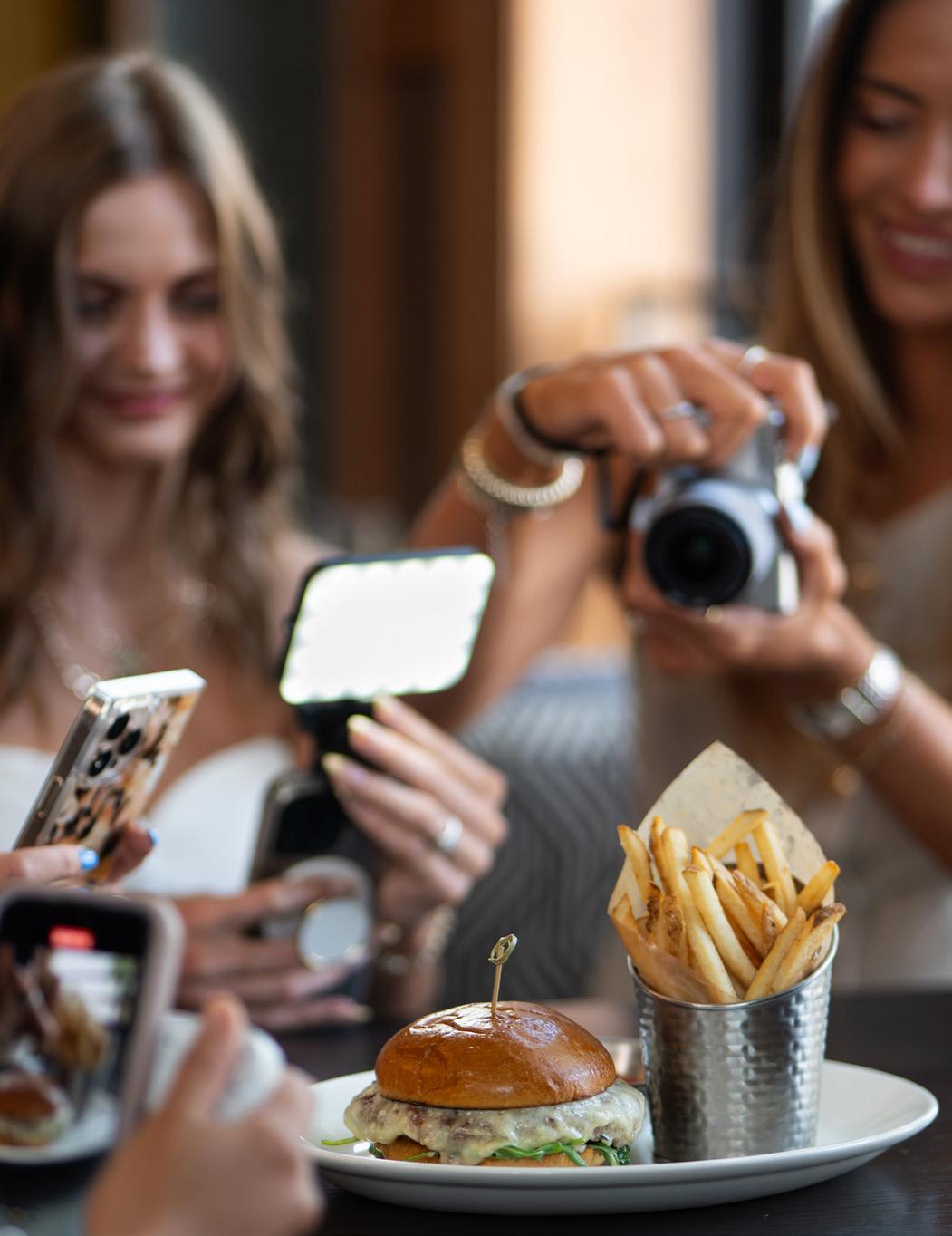
Camera
EATS FIRST EATS FIRST
INSIDE THE RISE OF INDY’S NEW FOOD TASTEMAKERS
Written by Adam Grubb / photos by Adam Grubb Media, Tess Lawyer-Smith, and Jennifer Morris Photography
You’ve seen it. Maybe you’ve done it. The reach for the phone. The slow-motion cheese pull. The swirl of a cocktail beneath just the right lighting. What was once a private ritual of taste has become a public performance. In Indianapolis, the food influencer is no longer a niche persona. They’re the new tastemakers—storytellers shaping appetites and guiding where we eat next.
These influencers don’t just document food, they celebrate it. They often give small, local restaurants the kind of attention that money can’t buy. Behind every beautifully filtered post is a person with perspective, a platform, and a purpose.
Here’s a look at four voices shaping Indy’s modern food scene.


CHELSEA KOPELMAN @keepingupcarmel
followers: IG ~58.3K
Chelsea’s impact became clear during dinner at a restaurant she had recently posted about, when a fellow diner recognized her and said, “We’re here because of your post.” That moment didn’t just affirm her reach; it showed that people were really listening.
Her story begins back in 2019, when Kopelman moved to Carmel with her young family. The area was known for being a great place to live, but getting plugged into the community wasn’t easy. Chelsea kept thinking, “I wish all this information from all these different sources was available in one central resource,” and “I wish I knew someone who could share their personal experiences with me.”
In 2022, she launched Keeping Up in Carmel as the first affiliate of what would become Keeping Up Local, a digital platform designed to do exactly that. After a strong reception, she expanded into Keeping Up in Greenwood, and now the network features Downtown Indy and Brownsburg. Each affiliate is run by a local community member, with Chelsea continuing to lead from the front.
“If I’m not authentic, I won’t pass the red-face test when I meet people,” she says. With her audience heavily concentrated in Central Indiana, she’s committed to uplifting small businesses with stories she can stand behind.
Kopelman sees herself not as a critic but as a connector who links curious locals to deserving businesses. Roselli’s Pizza in West Carmel is her current hidden gem. “Family-owned, one location, 30 years in business, and some of the best Chicago-style pizza around.”
When it comes to partnerships, her rule is simple: If she doesn’t love it, she doesn’t post it. That commitment is exactly why her followers stick around.
“If someone walks away from our content saying, ‘That was helpful,’ then we’ve done our job.” * Follower counts

MARKISS STONE
@travelingfoodieguyde
followers: IG ~114K, TikTok ~50K
With a bold personality and an even bolder palate, Markiss has become one of Indy’s most influential food creators. He knew he was onto something when a follower commented, “I’ve lived in Indy my whole life and never heard of this place.” That wasn’t just praise; it was proof he had become a resource.
A Chicago native, Markiss brings an honest, high-energy vibe to every post. But his content is also intentional. “I only post what I like. I’m not in the business of hurting small businesses.”
This is no side hustle; it’s a full-time job. “This is how I pay bills and provide for my kids,” he says. And while Stone is flexible with small businesses that need visibility, he’s clear about the value creators bring. “If you don’t believe this is real work, try it.”
Stone’s current obsession? Nino’s Pizza in Noblesville: tavern-style slices that remind him of home.


“I want my viewers to feel a breath of fresh air knowing someone is trying to highlight the Indy food scene positively and continue to expose Indy in a way that garners attraction to our dope city.” NATE SPANGLE
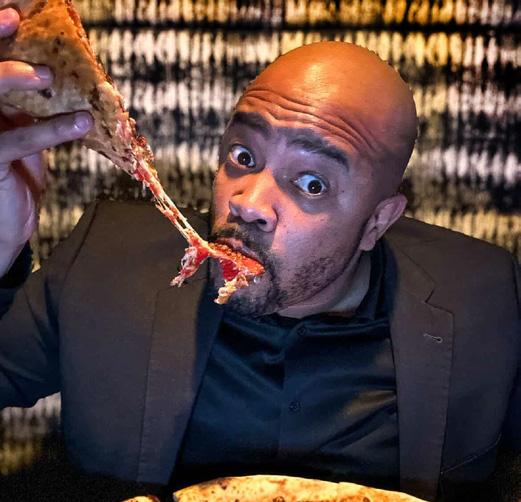
Nate didn’t start with food—he started with Indiana. Through his podcast Get IN, he wanted to spotlight people and places that make the Hoosier State special. Food just happened to be the most delicious entry point. His aha! moment? Watching @thecavityfactory sell out after going viral. “It clicked that views can directly turn into dollars for local businesses.”
Nate’s approach is pragmatic: “We post everything and let the audience tell us what’s working.” From there, it’s a data-driven pivot toward engagement. But whether it’s paid or passion, every post starts with an idea they’d share anyway.
“I want people to feel proud of Indiana,” Spangle says. “Proud enough to talk about it when they travel.”
His current summer go-to? Mug-n-Bun in Speedway. “Greatest summer night spot around.”
“The creators who bring their own twist to this space will continue to grow—and shape what Indiana looks like online.”
Nate Spangle
Markiss Stone

LARA PASOTTI
@see_do_eat
followers: IG ~12.7K
Lara’s account is a love letter to local food, told with the eye of a storyteller and the voice of a trusted friend. A full-time professional outside of content creation, she started posting simply to share the joy of discovery. “I prioritize locally owned small businesses, but I’ll post anything I’m excited about.”
Today, her account is a 50-50 mix of paid collaborations and personal passion projects. “Being choosy has helped me build trust. And some of my best partnerships started from just being a regular somewhere.”
Natural State Provisions is her current crush. “Delicious no-frills menu, great burger, frozen cocktails, a dogfriendly patio, and soft serve. We’re trying to become regulars this summer.”
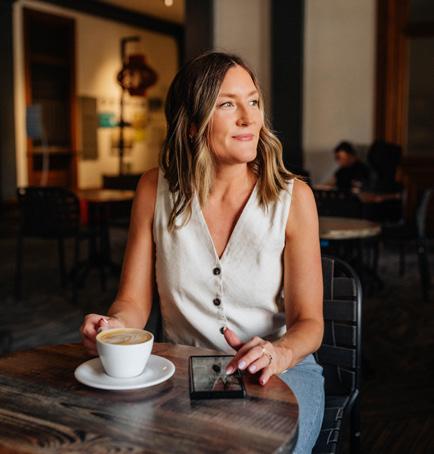
Lara’s mission is simple: Make people curious enough to try something new.
“When someone says, ‘I learned about that place from you,’ I know I’ve done something right.”
What unites these creators? They shape how Indianapolis eats, explores, and supports its local community.
Together, these creators form a constellation of influence. Some have massive followings. Others have hyper-engaged niche audiences. What unites them is this: they shape how Indianapolis eats, explores, and supports its local community.
And these four aren’t alone. The duo behind @indybrunchcouple have carved out a loyal audience obsessed with breakfast spots and Sunday splurges. @sierrainthecity focusing on food, drink, and travel has seen some major growth in the last year and is on our “Influencer watchlist.” @tasteindianapolis has a focus on baking, bakeries, and cool spots to visit with 22K followers and growing daily.
But behind the curated shots is the reality of a new kind of business, and each creator approaches it differently. Some work strictly through partnerships and paid content.
Others rely on a blend of trade (free meals or event invites) and affiliate marketing. A few choose to keep everything unsponsored, but most will tell you: A consistent pipeline of visibility often means brands invest.
The economics vary. Some influencers charge per post; others offer multi-platform packages. Some barter with experience or exclusivity. But no one here is just “doing it for the free food.” There’s time, talent, and trust involved.
There are challenges, of course. Navigating sponsorships while maintaining authenticity. Avoiding burnout. Respecting restaurant staff and space. But what these four creators show is that influence, done well, isn’t shallow. It’s a service. It’s storytelling. And in a city as layered and flavorful as Indy, we need more of both.
Lara Pasotti
HOW EXPERIENTIAL DINING IS CHANGING THE WAY WE EAT
EVERY ISSUE, THE FOUR TOP SHOWCASES FOUR TOP-NOTCH CULINARY FINDS— RANGING FROM RECIPES TO RESTAURANTS TO COCKTAILS… AND MUCH MORE.
Written by Julia Hockman
Every foodie knows that each meal has the potential to be an experience. However, some restaurants have upped the ante, providing places so unique that food is often only one part of the equation. We’ve rounded up four destinations that combine food and entertainment so effortlessly, they set the bar for experiential dining in Indy.
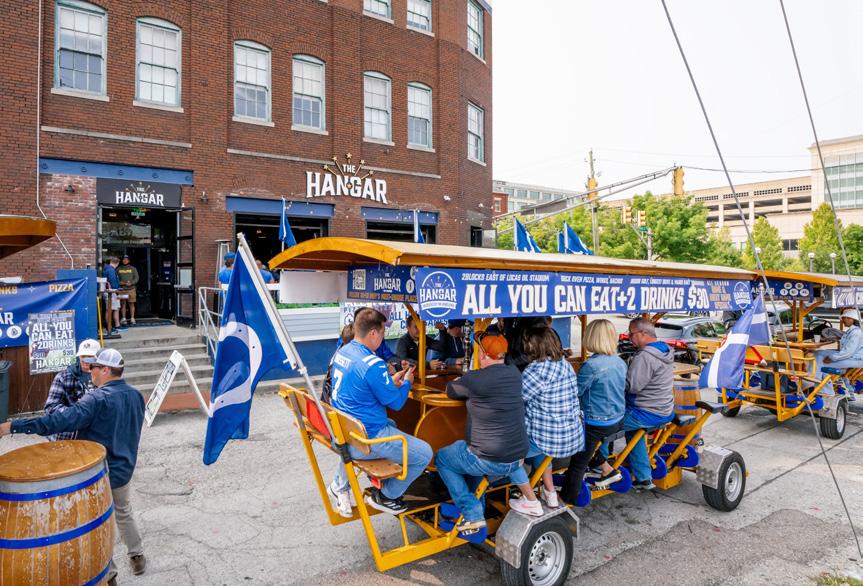
The Hangar and HandleBar
1. THE HANGAR
501 Madison Ave. #106, Indianapolis hangarindy.com
The Hangar might be most known for their HandleBar pedal pubs, but they’re looking to become Indy’s one-stop shop for all things experiential. Their lineup currently includes e-bikes, golf and gaming simulators, crafting parties, and a full restaurant and bar within The Hangar. New pedal bar offerings include yard games to break up the bar crawl, pickup and drop-off from downtown locations, to-go drink options, and a brunch experience that combines a HandleBar tour followed by brunch at The Hangar.
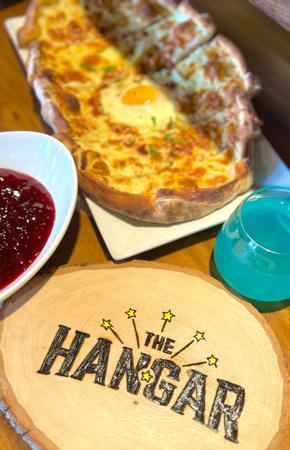
Apart from brunch, the restaurant at The Hangar is most known for brick oven pizza and their take on pizza rolls, called “spare tires” (think cinnamon roll, but pizza). They also have an assortment of other apps and mains.
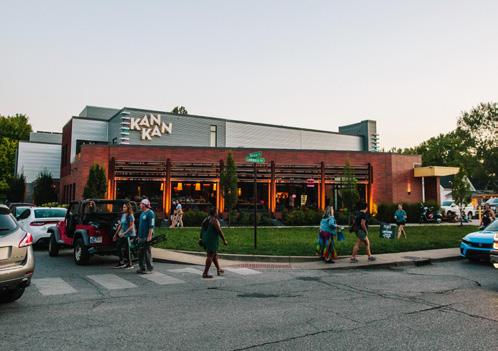

2.
THE KAN-KAN
1258 Windsor St., Indianapolis kankanindy.com
The Kan-Kan adds a twist to the classic dinner-and-a-movie concept. Unlike a dine-in theater, Kan-Kan presents two separate theater and restaurant experiences. Independent of each other, you can come for dinner, a drink at the bar, a movie, or a combination of your choosing. The restaurant will soon reopen as a pizza-by-the-slice shop run by King Dough. The new concept will provide guests with more flexibility before and after movie time while also functioning as an approachable neighborhood hangout spot.
After dinner or drinks, you can choose to head over to the arthouse cinema, which focuses on a curated list of small-budget movies. They screen everything from the classics to works from local filmmakers. There’s a separate concession stand for classic movie snacks and drinks, and you can even bring your beer or cocktail into the theatre.
Kan-Kan
Kan-Kan’s theater
The Hangar brunch and woodcrafting
3.
THE JAZZ KITCHEN
5377 N College Ave., Indianapolis thejazzkitchen.com
The Jazz Kitchen combines the worlds of music and food to create a well-rounded night out. A fresh take on dinner and a show, The Jazz Kitchen always has a variety of acts scheduled from around the jazz world. The listening room is casual yet sophisticated, with a full made-from-scratch menu and bar service to complement any show. The menu, a mix of southern and midwestern influences, features everything from tacos and burgers to steaks, seafood, and salads.
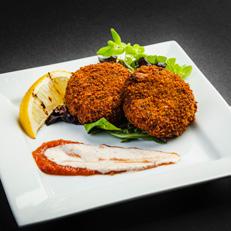
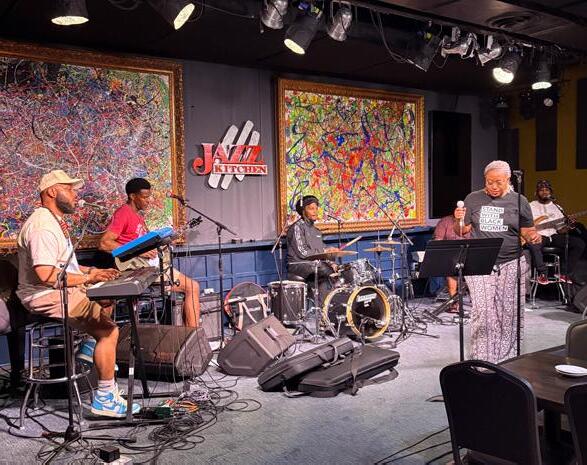
Tickets are required for the shows, and it’s recommended to get them in advance. Fear not: If you’re just looking for a bite, the lounge and patio seating are available with no cover charge depending on availability.
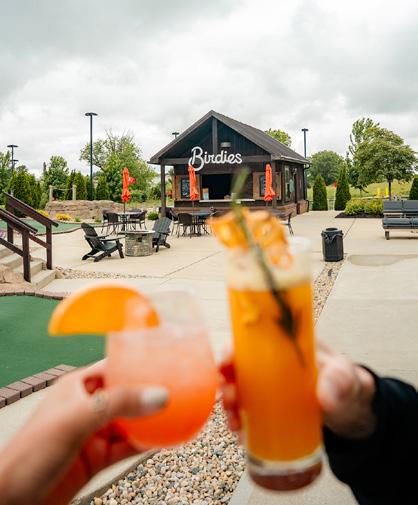
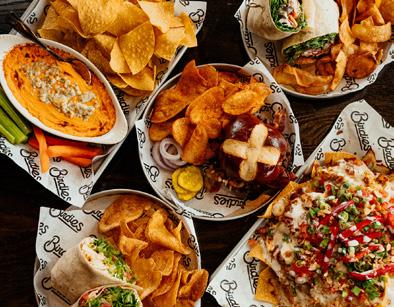
4.
BIRDIE’S
632 E. State Rd. 32, Westfield birdiesindy.com
Birdie’s in Westfield is home to a gigantic restaurant and year-round miniature golf course. To kick off the evening, you can start at the grill house and sports bar, which spans over 7,000 square feet and has plenty of rooftop, patio, and indoor seating. The menu features classic game-day fare, including dips, burgers, wings, and more.
After dinner, head over to the massive miniature golf course, where you can choose between 18 or 36 holes. With a snack shack and an outdoor bar by the course, you’ll have everything you need for a full night of entertainment.
Live music at The Jazz Kitchen
IMAGEPROVIDED BY THEJAZZKITCHEN
PHOTO BY JULIA HOCKMAN
Birdie’s miniature golf
Birdie’s





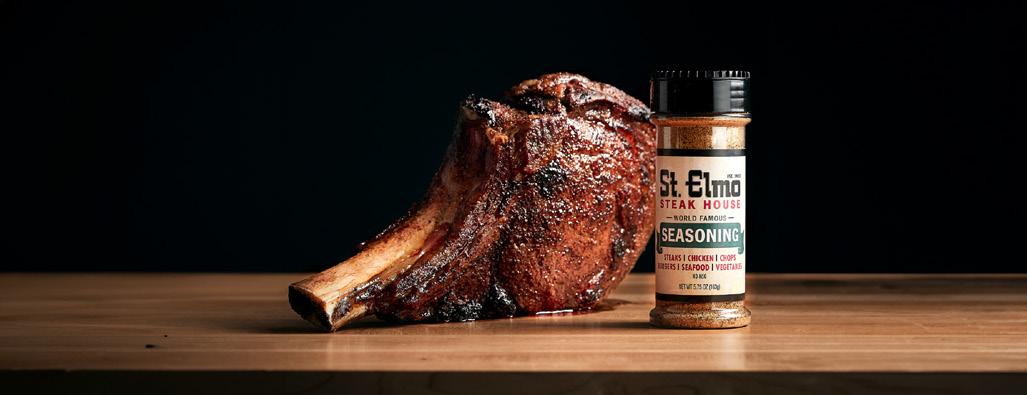
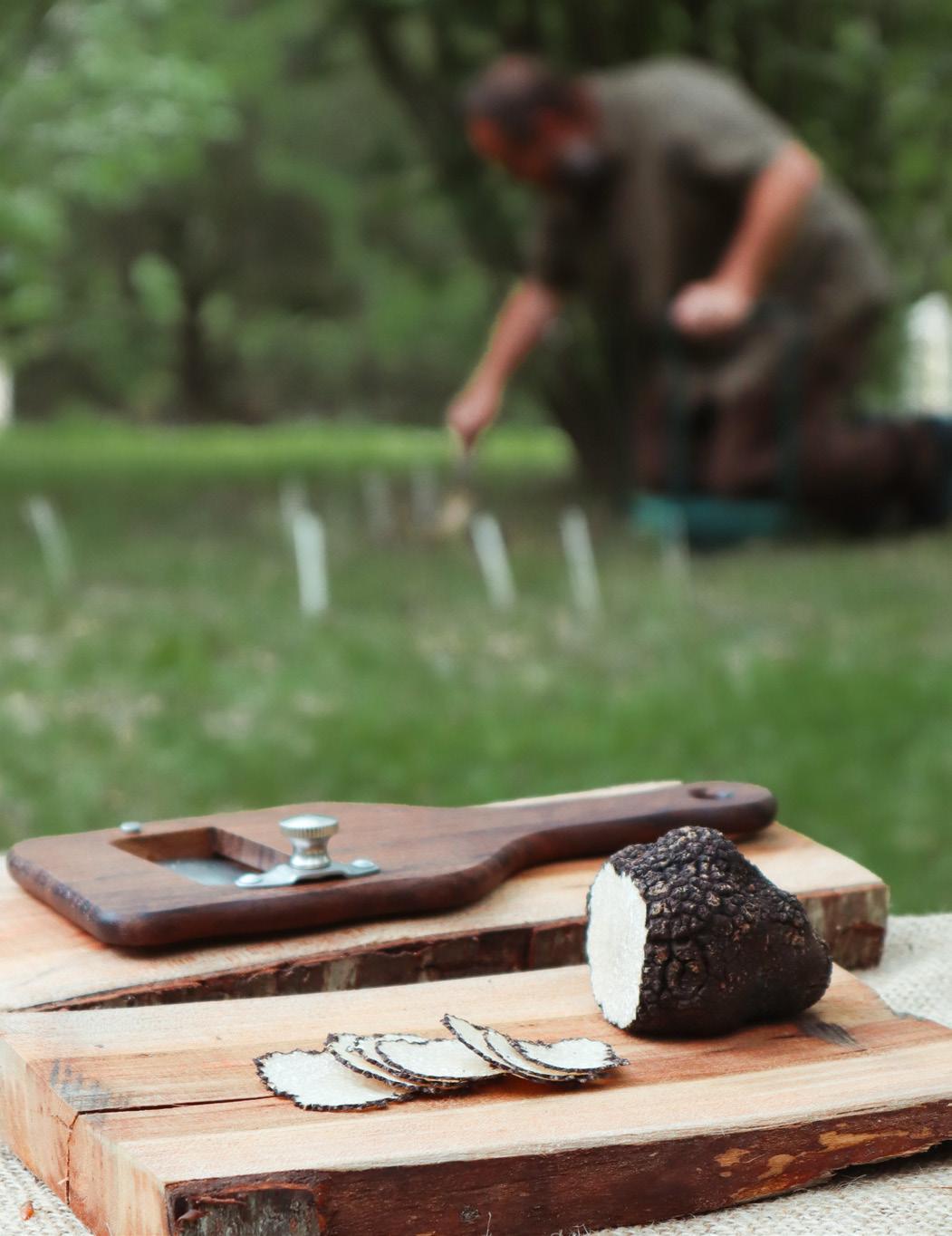
Unearthed Treasures:
THE HIDDEN BLACK TRUFFLE ORCHARD CULTIVATING FLAVOR IN INDIANA
Written and photographed by Bailey Shelton
A sense of mystery hangs in the air as we drive farther and farther into the countryside outside of Bloomington, along winding back roads through fields of grass, toward an address hard-fought to acquire and only by exclusive invitation. The car tires creep up a gravel drive, and I’m uncertain as I pull up to the house set back from the road. But this is no horror story; it’s closer to a treasure hunt, and we’ve been invited to the X marking the spot.
As the first visitors to this hidden location, we beat out local chefs and loyal vendors to see an Indiana black truffle as it’s pulled out of the soil. One step out the car door, camera at the ready, we are greeted by Wes Burton. Burton’s frame is sturdy, and his beard long and scraggly with shades of grey and white. Behind wire frames are icy, blue eyes. His hands are darkened with dirt, and he speaks with an enthusiasm for everything he does. He and his wife, Debi, planted the truffle orchard on their southern Indiana plot 23 years ago.
“Our kids grew, our coffee roasting business grew, and our truffle trees grew,” says Burton.
Truffles have gained a global reputation for the way they
elevate risotto and other fine-dining dishes. With a flavor that sits somewhere between mushroom and garlic, truffles are known for their unique and decadent aroma, especially when freshly harvested. Practically speaking, the truffle itself is a fungus that grows on the roots of certain trees.
As we walk to the back of the property, a furry figure bounds up to greet us, restrained only by the leash that Debi Burton is gripping firmly. Hazel, a truffle-sniffing puppy in-training, is easily excitable, but good at what she does. And without her, the treasures under the earth would be lost to the soil.
“Most truffles are underground and require either a pig or a trained dog to find them. You cannot simply go rooting around the trees,” says Burton, explaining that careless digging could destroy the mycelium network below.
The threat of truffle hunters is what keeps the Burtons closely guarded. Black truffle gold rush could cause someone to rip at the soil and destroy the whole truffle orchard in one fell swoop. Instead, the Burtons steward their trees, as they have done for 20 years, and have
“Most truffles are underground and require either a pig or a trained dog to find them. You cannot simply go rooting around the trees.”
– WES BURTON, truffle orchard farmer
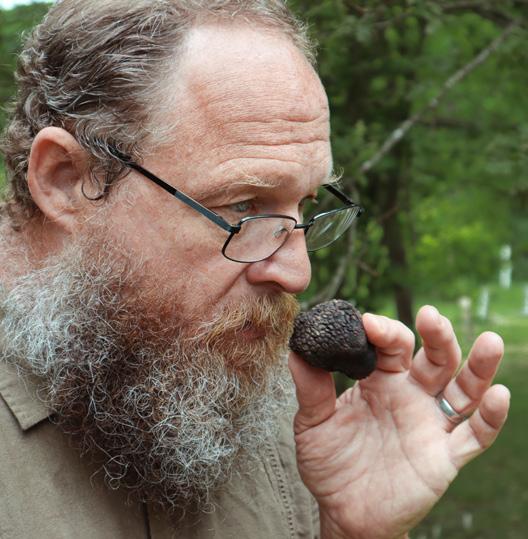
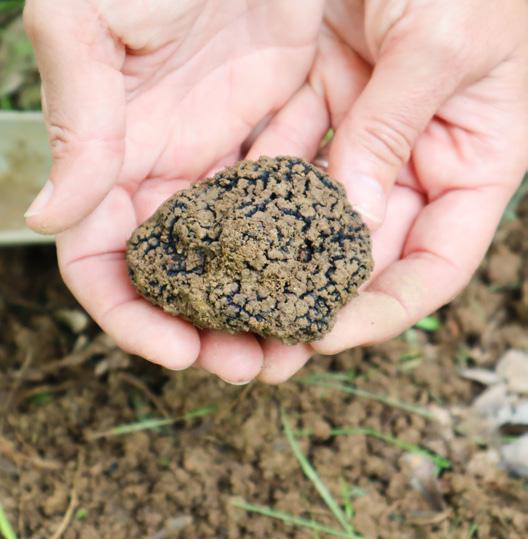
opened up shop to some of the best kitchens in Indianapolis, including Commission Row and Fishers-based personal chef and catering company Chefski. You might have tasted some of Burton’s 2024 crop at Magdalena, where owner/cook Nick Detrich used them in potato latkes with garlic aioli, with Indiana black truffles microplaned thinly on top.
“The biggest thing for me is the novelty,” says Detrich, “and we’re getting something that’s a pretty temperamental product, but with Wes’ stuff we’re getting it from the dirt to our hands in a matter of, sometimes, hours.”
Although native to regions of France and Italy, there are pockets of truffle orchards all over the world. In 2001, researcher Gerard Chevalier of the French National Institute for Agriculture, Food, and Environment published a paper on distinguishing between the Asiatic black truffle and the Perigord black truffle. The two types are cultivated in different parts of the world, but the Perigord, or French black truffle, is one of the most fragrant, and most expensive, varieties in the world. The Burtons credit Chevalier’s research with inspiring them, and by June 2002 they had planted truffle-inoculated oak and hazelnut trees in their backyard.
“Last season, they ran anywhere from $30 to $40 per ounce, which is roughly the size of a golf ball,” Burton says as he washes off the palm-sized truffle in a plastic bowl. The largest they’ve found weighed 12 ounces and measured roughly the size of a softball.
Although bountiful, the Burton’s truffle orchard required 20 years of waiting before they pulled the first black truffle from the ground.
“My sharp-eyed wife spotted something odd poking through the surface near a hazelnut bush,” says Burton. The area surrounding their trees had already sprouted bald patches called terre brulé, or scorched earth, which commonly heralds the coming of truffle production. A long wait, with bountiful returns.
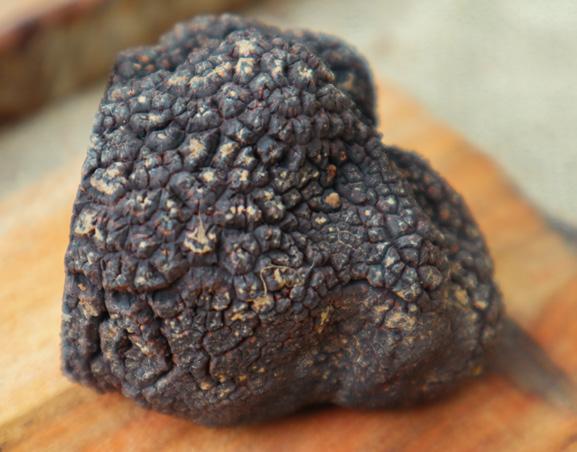
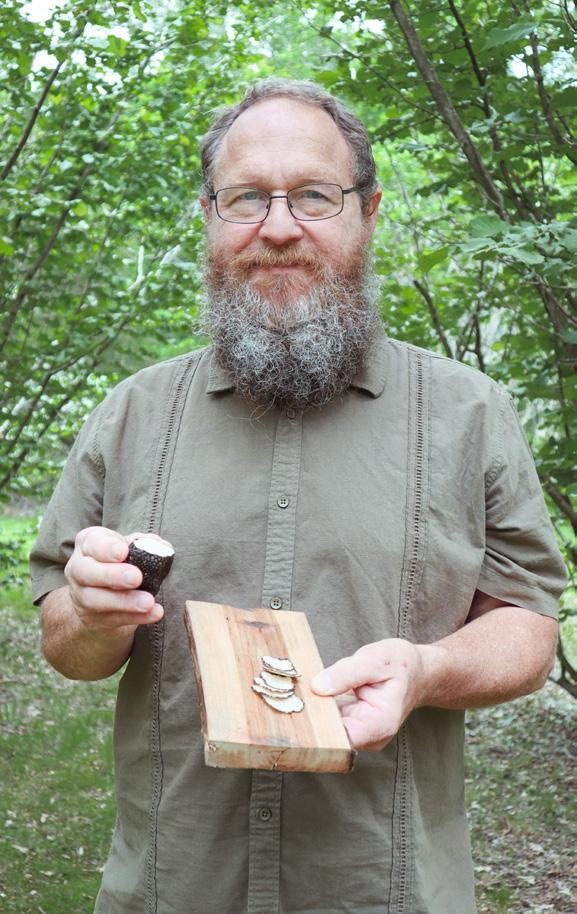



END OF SUMMER Dinner Party
Written and photographed by Reba Toloday
Menu:
Piment d’Espelette Pickled Cherries
Whipped Cottage Cheese
Sweet Corn Risotto
Tomatoes with Shoyu & Boursin Green Salad
Fontainebleau with Ripe Peaches
Drinks:
Vermouth Spritz Assorted Wine
Every year I plan out a late summer affair, featuring the spoils of an Indiana summer.
When thinking through the menu, I let the market be my guide: aisles overflowing with fat tomatoes, corn so sweet you can eat it raw, and fragrant juicy peaches. It’s generally easy to follow the 1-2-1 rule when it comes to the main course: one hot thing, two room-temperature or cold things, and one easy starch. For this menu, risotto acts as a sneaky dinner party favorite. Parcook (or partially cook) the risotto early in the day, getting all the labor-intensive simmering out of the way, and warm it on the stove just prior to serving. Roomtemperature sliced tomatoes are a must on the August table, and a towering green salad with a mustardy vinaigrette provides freshness. A boule of sourdough from a local bakery rounds everything out.
Once the main is considered, think of the bookends: For an appetizer, keep it simple with a dip or hunk of cheese and some nuts to snack on. For a late summer dessert, try something with fresh, ripe fruit, ready to pull from the fridge and serve.
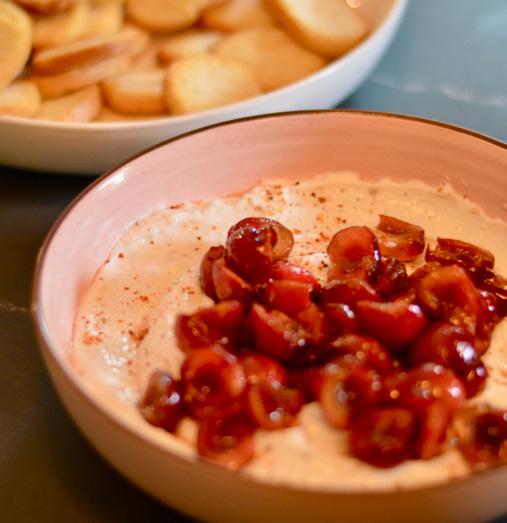
PIMENT D’ESPELETTE PICKLED CHERRIES WITH WHIPPED COTTAGE CHEESE
Blitzing cottage cheese until it’s smooth and whipped produces a blank canvas endlessly customizable to any season, making for a quick and delicious appetizer. For this one, sweet cherries lightly pickled in rice vinegar provide a nice tangy contrast to the smooth dairy, but you can top it with anything you like. For a savory version, add herbs of your choice to the cheese when blending. Serve with small toasts or crackers.
INGREDIENTS
Pickled Sweet Cherries: 8 ounces sweet cherries, pitted
⅔ cup rice vinegar
⅓ cup water
3 tablespoons granulated sugar
1 teaspoon kosher salt
½ teaspoon Piment d’Espelette pepper (optional)
Whipped Cottage Cheese:
12 ounces whole-milk (4%)
cottage cheese
1 tablespoon extra virgin olive oil
Pinch of salt
Black pepper
METHOD
For the pickled cherries: Pit the cherries and add to a medium bowl. In a small saucepan, heat the vinegar, water, sugar, and salt together over medium heat until the sugar dissolves—it does
Piment d’Espelette Pickled Cherries with Whipped Cottage Cheese
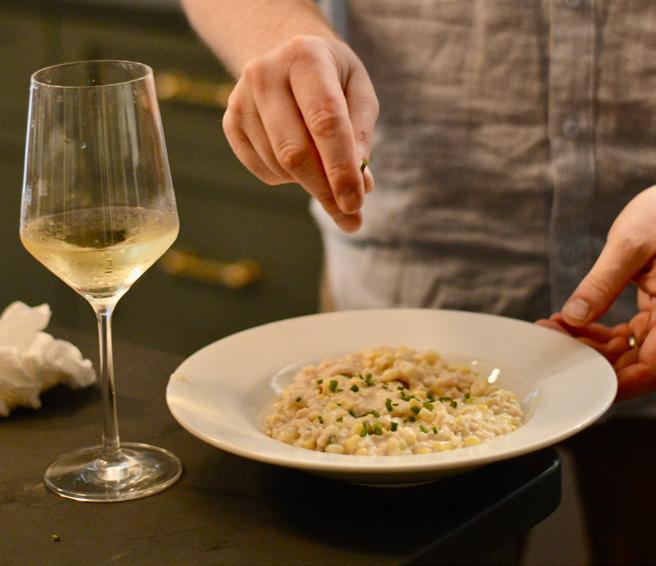
not have to come to a boil. Allow to cool slightly, then pour the brine over the cherries and let the pickles come to room temperature on the counter. Once cool, cover and refrigerate for at least 1 day before eating. The cherries are best within 1 week but will keep for several months in the refrigerator.
For the cottage cheese:
In a food processor, add the cottage cheese, salt, and a few cranks of black pepper and pulse until mostly smooth. Add olive oil and process until whipped and the texture of hummus.
To assemble:
Remove from the pickle brine the amount of cherries you want to add to the dish. Roughly chop or slice them in half and set them aside.
In a shallow serving bowl, add the cottage cheese and, using the back of a spoon, swirl the mixture around until it is evenly spread across the dish. Top with pickled cherries, drizzle with
olive oil, and sprinkle with ½ teaspoon Piment d’Espelette pepper (for a smoky spice) or more freshly cracked black pepper.
SWEET CORN RISOTTO
Risotto can feel intimidating for a dinner party as making it can require a lot of time close to the stove— monitoring, stirring, and testing (all the things that you want to avoid while entertaining) until you learn that it’s one of the easiest make-ahead dishes out there. Risotto works beautifully if cooked until JUST a touch firmer than al dente, cooled, and popped in the fridge up to a week (!) before your party. Right before serving, reheat the rice on the stovetop with a little extra broth to bring it back to life, and—the real trick—fold in plain whipped cream to the dish. This creates an ethereal, creamy dish that goes from stove to table in less than 10 minutes of dinner party time.
Serves 8–10, easily halved for a smaller group
Adapted from NYTimes Cooking
INGREDIENTS
To parcook:
12 cups vegetable or chicken stock
4 tablespoons unsalted butter
2 leeks, dark green tops discarded, finely chopped
2 teaspoons kosher salt
1 teaspoon black pepper
2 cups arborio rice
1 cup dry white wine
To heat and serve:
Raw corn kernels from 4–5 ears of corn (about 3 cups, but more is fine!)
2 cups parmesan cheese, grated on the small hole side of a box grater
1 cup heavy cream
¼ cup minced chives
METHOD
Add the chicken or vegetable stock to a medium saucepan and bring to a simmer; you’ll want this to stay hot while you make the dish. Pull out a wide vessel—a quarter or half sheet pan is perfect—and set aside. This is to spread the hot parcooked rice onto to quickly cool it off; you’ll want it ready to roll.
Melt the butter in a large high-sided sauté pan or Dutch oven over medium heat. Add the chopped leeks and cook slowly, adjusting heat as needed, until leeks are softened but not browned. Season with salt and pepper. Add rice to the mixture and cook, stirring to coat with butter and leeks until the edges of the rice grains are translucent.
Sweet Corn Risotto
Pour in white wine and stir until absorbed by the rice. Add a ladleful of that simmering stock you have ready to go and stir until the rice has absorbed all of the stock. Continue cooking, adding another ladleful of stock to the rice, allowing it to absorb, and repeating until the rice is not quite cooked through. Take a bite of the rice—it should be starting to get tender but still have a chalky raw center to it. Once you’ve reached that point, quickly transfer the rice to the sheet pan and spread it out in an even layer to quickly and evenly cool and stop any carryover cooking. Give the rice a few stirs to help quicken the cooling. Once it comes to room temperature, transfer the parcooked risotto to sealed containers (takeout containers work perfectly for this). Keep it in the fridge for up to a week. Reserve and refrigerate the remaining stock.
When you are ready to serve, heat the remaining stock in a small saucepan and add the rice and 1 cup of the reserved broth to the Dutch oven or sauté pan you originally cooked it in. Slowly warm the risotto over medium heat, adding in a few ladlefuls of stock and stirring the whole time. Test the risotto for doneness: You want the rice to be tender but still have a little bite. Add the raw corn kernels, stirring to warm and cook through (this will take only a minute). Remove risotto from the heat, then stir in parmesan cheese and 2 tablespoons of unsalted butter. Let sit covered for 5 minutes.
While risotto is resting, use an electric mixer or hand mixer to beat cream at high speed until it holds stiff peaks. Uncover the risotto, add half of the chives, and stir the rice vigorously. Gently fold in the whipped cream. Top
with additional chives and parmesan cheese if desired. Serve!
TOMATOES WITH SHOYU AND BOURSIN
A dish of sliced raw tomatoes with salt and pepper finds itself on almost any table of mine come late July, so it’s no surprise that this is a star of the dinner party. Adding shoyu or soy sauce to tomatoes creates an umami bomb of flavor, and a few crumbles of herbed Boursin cheese is all you need for a bright and super simple no-recipe side dish.
Serves 6–8 as a side dish
INGREDIENTS
3–4 ripe tomatoes, sliced
Soy sauce
Extra virgin olive oil
Boursin Garlic and Fine Herbs cheese
METHOD
Slice the tomatoes and lay them in a shallow bowl or serving plate. Drizzle lightly with soy sauce and extra virgin
olive oil. Right before serving, top with crumbled Boursin (I use about half a wheel for 4 tomatoes but use your best judgment).
GREEN SALAD
I love a simple green salad, but when I had the infamous insalata verde at New York celebrity hotspot Via Carota a few years ago, the game was changed. This pile of greens with a simple shallot and mustard vinaigrette has proven to be the perfect foil to almost any dish. When the greens are in season and the market is overflowing with different lettuces, this becomes a tribute to leafy greens with a dressing you just might put on everything.
Serves 8–10
Adapted from NYTimes Cooking
INGREDIENTS
For the salad:
2 heads butter lettuce
1 head romaine
1 bunch watercress
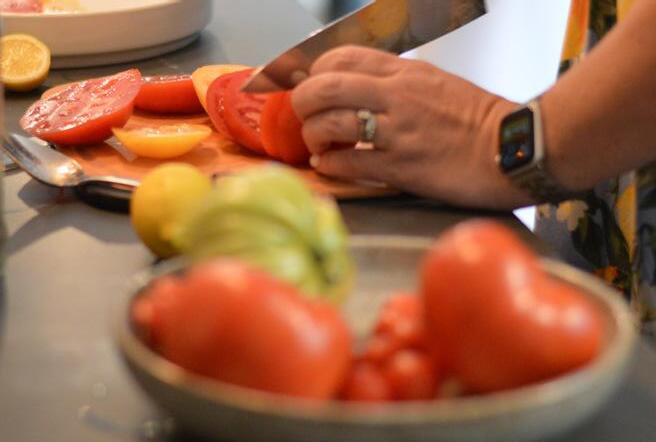
Tomatoes with Shoyu and Boursin
1 large Belgian endive
1 head endive
For the dressing:
1 large shallot, minced
2 tablespoons sherry vinegar
1 tablespoon warm water
1 cup extra virgin olive oil
1½ teaspoons whole-grain mustard
1½ teaspoons honey (optional)
2 sprigs thyme, stripped
1 large garlic clove, grated or smashed into a paste
Kosher salt
Freshly ground black pepper
METHOD
Note: The repeated washing and ultimate drying of the lettuce leaves might feel like overkill, but the simplicity of this salad requires you to treat your greens like queens. Clean and dry lettuce is lettuce that dressing clings to and where seasonings shine. Don’t skip this important prep!
Remove any wilted or brown leaves from the lettuces. Chop the end of the root off the heads of romaine and
endive to release the leaves. Leave the butter lettuce leaves whole (unless huge, then rip or chop in half), chop the romaine and endives on the bias. Trim the long stems off the bundle of watercress and toss anything that is brown or wilted.
Fill the biggest bowl you have with room-temperature water. Add all greens to water and give a thorough mix with your hands, swirling them around until everything feels washed. Drain the water. Repeat again with slightly colder water. Finally, wash a third time with COLD water (throw in a few ice cubes if you are feeling wild). Transfer to a salad spinner to dry, then lay greens on clean towels or paper towels and stash in the fridge until ready to dress.
For the dressing:
In a lidded jar, add shallot, vinegar, and warm water. Allow to sit for a few minutes—this takes the edge off the raw shallot. Add oil, mustard, honey, thyme, garlic, and a large pinch of salt. Screw on the lid and shake vigorously until combined. Dip a small spoon (or a leaf of prepped lettuce) in the dressing to taste for seasoning. Add vinegar or salt if needed.
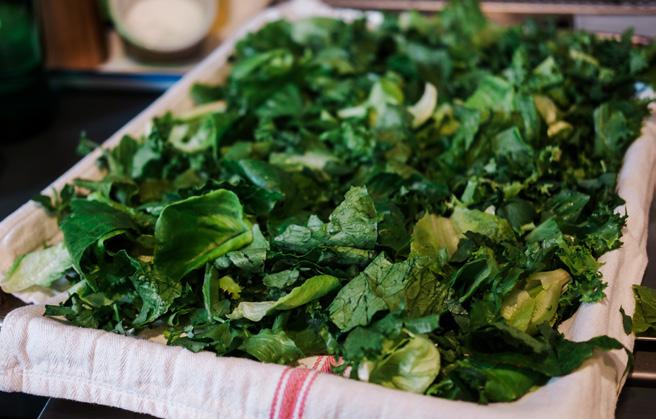
To serve:
In the largest bowl you have, add half of the greens and season with a pinch of salt and a few cranks of pepper. Give the greens a generous drizzle of dressing and then, using clean or gloved hands, gently toss to coat the leaves. Repeat with the second half of the greens. Transfer to a large serving bowl. Serve immediately.
FONTAINEBLEAU WITH RIPE PEACHES
This simple French dessert is quite literally the creme de la creme. A tribute to fresh dairy and ripe fruit, it’s a perfectly sweet and cool ending to a meal. This is traditionally made with fromage blanc, a fresh cheese similar to cream cheese originating from the north of France and southern Belgium, but that can be hard to track down so I’ve substituted the easier-tofind creme fraîche. You can top this with any perfectly in-season fruit of your choosing. If fruit isn’t in season? Top with your favorite jam.
Serves 8–10
INGREDIENTS
8 ounces vanilla bean creme fraîche
8 ounces plain creme fraîche
2 cups heavy cream, divided
2 tablespoons granulated sugar
4 ripe peaches, trimmed and cut into ½-inch pieces
METHOD
In a large mixing bowl, combine both cremes fraîches and whisk until combined. In a separate bowl, using a stand or hand mixer (or whipping by
Green Salad
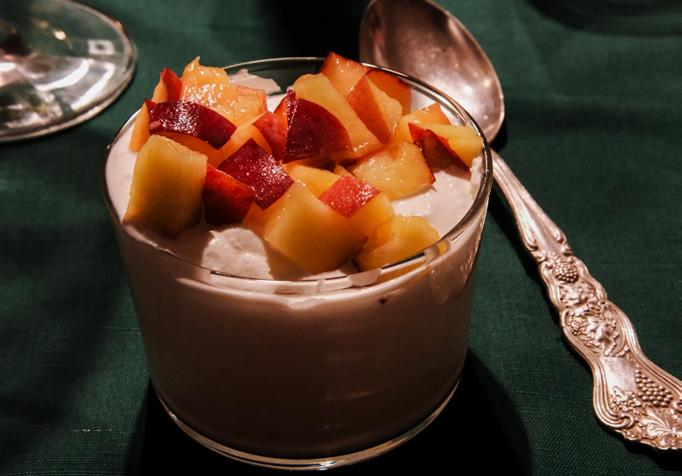
hand) whip 1 cup of heavy cream until stiff peaks form. Fold the whipped cream into the creme fraîche mixture until combined. Distribute evenly between small ramekins, drinking glasses, or other vessels of your choosing. If making ahead, cover with plastic wrap and refrigerate until serving, up to 4 hours ahead.
To serve:
In an empty mixing bowl, combine sugar and remaining 1 cup heavy cream and whip until stiff peaks form. Dollop or pipe whipped cream onto the creme fraîche mixture, topping with chopped fruit. Serve!
VERMOUTH SPRITZ
This simple drink is my way of encouraging my friends to look beyond the martini when it comes to vermouth. Affordable, endlessly customizable, and ranging across hundreds of flavors, vermouth is the perfect opener to dinner. The botanicals used in the drink stimulate the appetite and the soda and prosecco give it a lively, festive
touch perfect for those first few sips. Not sure how to shop for vermouth? Head to a local wine shop—odds are there’s definitely at least one employee who has gotten the bug and will excitedly lead you to a bottle. For this menu, I got a unique rosé vermouth from Uruguay but the choices are endless!
Tip: Vermouth is wine, so once it’s opened get it off the bar and keep it in the fridge!
INGREDIENTS
1 (750 ml) bottle of vermouth
1 (750 ml) bottle of prosecco
16 ounces club soda
Fresh thyme
Orange or lemon slices
METHOD
I like the 3-2-1 ratio used in many spritz cocktails, so I follow it here as well. In an ice-filled wine glass, add 3 parts prosecco, 2 parts vermouth, and top with 1 part club soda. Garnish with citrus and thyme!
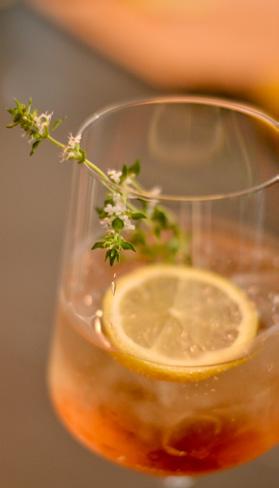
PARTY TIPS:
• Batch your cocktails ahead of time and set up an area where guests can self-serve drinks. This allows you to enjoy the company of your guests and settle into the party without needing to make individual drinks.
• If you feel intimidated by choosing wine, let the experts guide you. Find a reputable wine shop and tell them what you’re cooking and how much you want to spend— they’ll be thrilled to help, and the pressure is off.
• Don’t overcomplicate it—people are happy that you’re feeding them.
• Save the dishes for the next morning!
Fontainebleau with Ripe Peaches
Vermouth Spritz
A LOOK INTO THE BIZARRE AND WONDERFUL WORLD OF FOOD AND LIFE.
WHAT THE GRUBB?
The Greatest Cheesemaker YOU’VE NEVER HEARD OF
By Adam Grubb, Publisher
A goat cheese queen is living quietly in southern Indiana and chances are, unless you moonlight as a monger, you’ve never heard of her. But Food & Wine has. And in their April issue, they finally gave Judy Schad and Capriole Goat Cheese the kind of treatment usually reserved for Napa winemakers or Michelin-starred chefs.
It felt like a storied rocker finally getting their first Rolling Stone feature. Long overdue.
In 1976, she and her husband purchased an undeveloped 80-acre patch of land in southern Indiana, in search of a slower life. She told Food & Wine that their friends were joining country clubs, and Judy got a goat. And that goat, plus an overwhelming supply of milk no one wanted to drink, somehow led to one of the most iconic artisan creameries in the country: Capriole.
Let that sink in. One of the first producers of aged goat cheese in America is in our own backyard. And we are all too busy to even notice.
Capriole started in the family kitchen and grew from providing goat milk to
a nearby winery to eventually building their own cheesemaking facility right there on the farm. And it wasn’t just cheese for the farmers market crowd. This was cheese that made its way to Churchill Downs, to coast-to-coast restaurants, and even into the hands of Julia Child. Schad’s varieties have won awards and built a reputation that somehow still feels like a secret around here.
It shouldn’t be.
She’s 82 now. Still lives on the farm. Still has her hands in the process. Still gets called a pioneer by people in the cheese world who don’t use that word lightly. Capriole’s story reads like a food documentary, but most Hoosiers wouldn’t recognize the name if it was on a menu next to “goat cheese crostini.”
That’s what struck me the most reading the Food & Wine piece: how someone can have such a massive influence on an entire industry and still be hidden in plain sight. No parades. No plaques. Just cheese and a story aging quietly in a southern Indiana creamery.
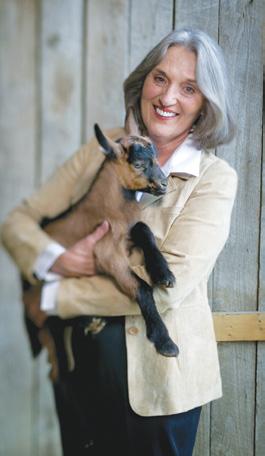
Judy Schad
So now you know. Capriole is a big deal. Judy Schad is a big deal. And next time you see her name on a cheese board or a label or a menu, don’t just nod and move on. Take a second. Say her name like you would a legend finally getting her due.
Because she is. And she did.


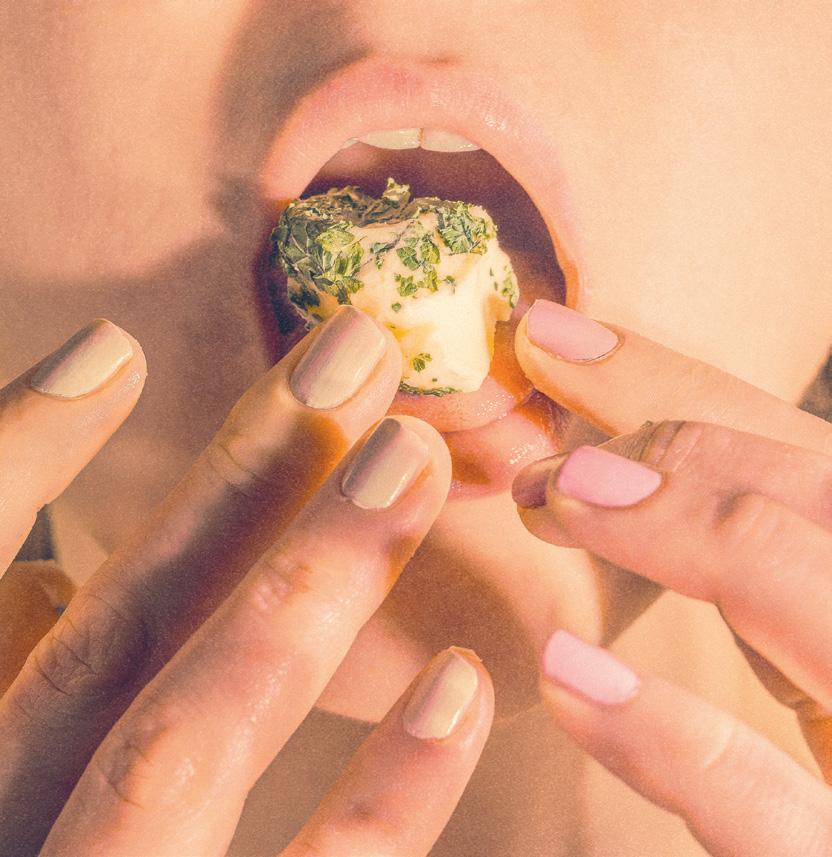
WHY WE EAT?


Patio season is our favorite season at Harry & Izzy’s!
Our wraparound terrace features a pergola roof, full outdoor bar, and cozy lounge seating—perfect for everything from sunny afternoon sips to leisurely dinners. Stop by for a drink or stay for the whole meal. Either way, your seat’s waiting.
